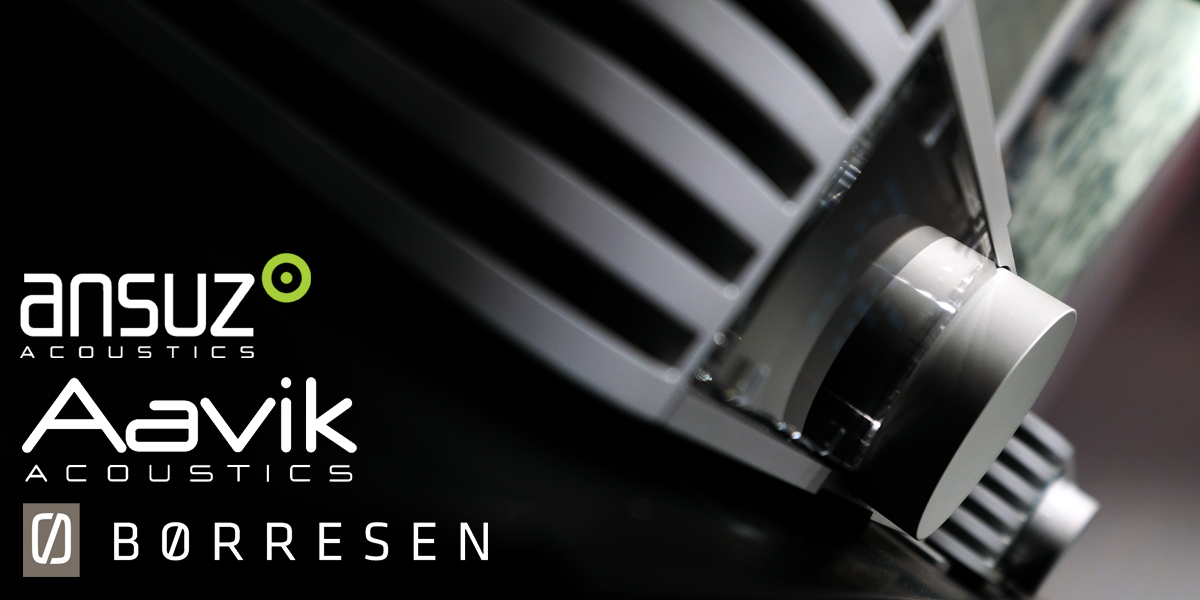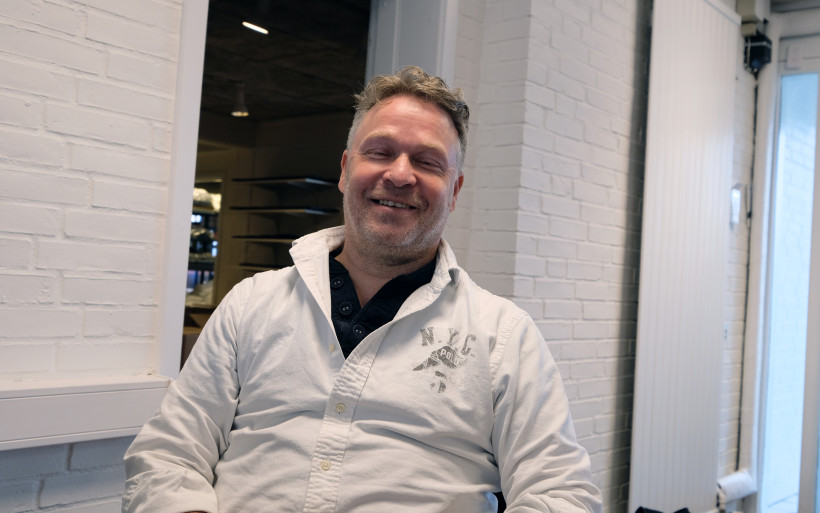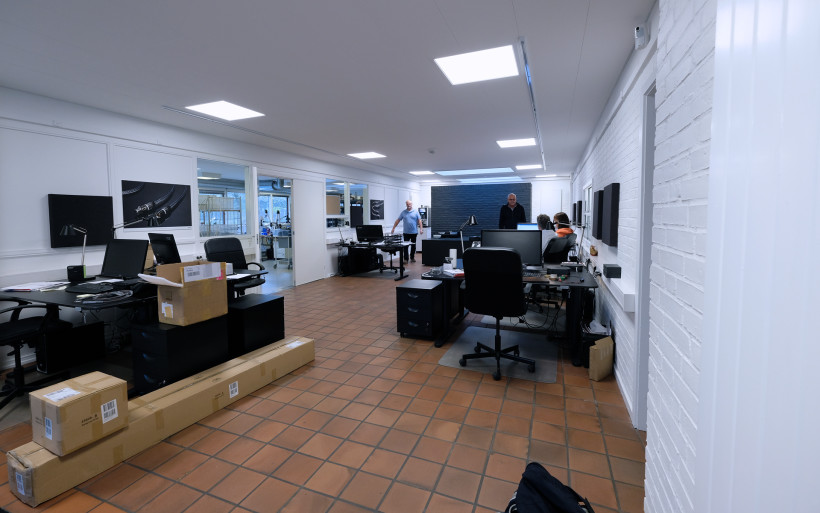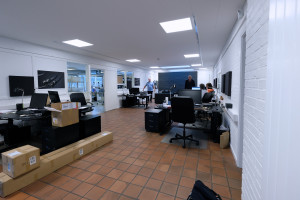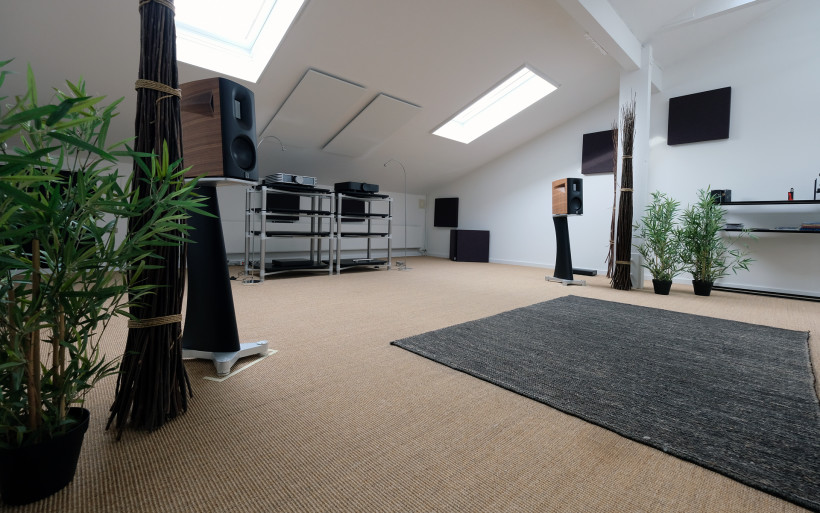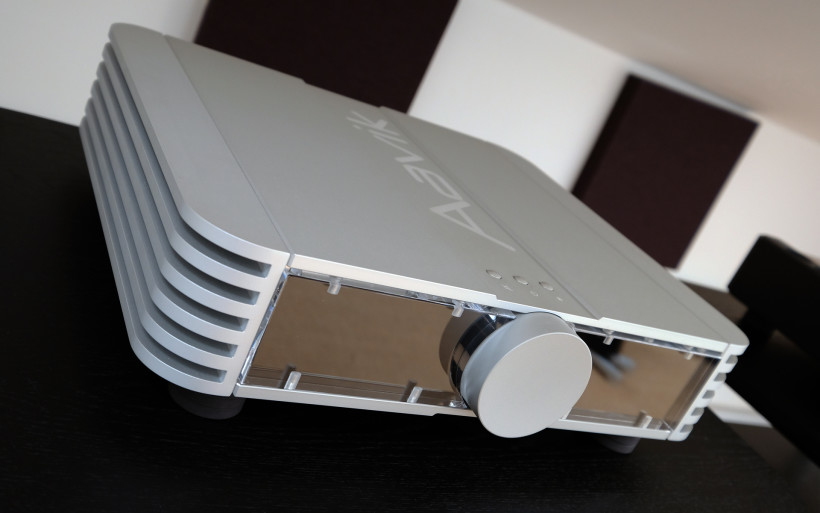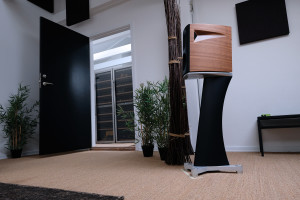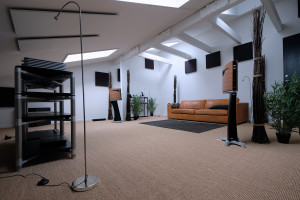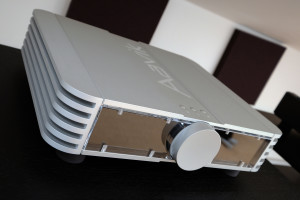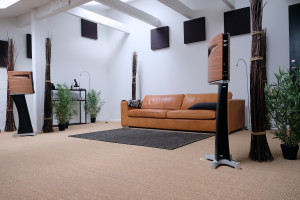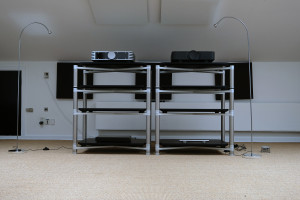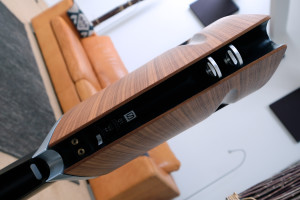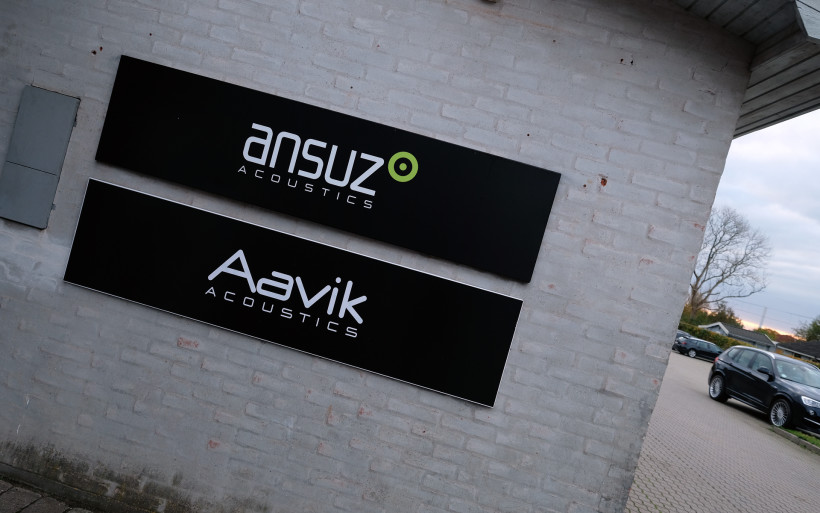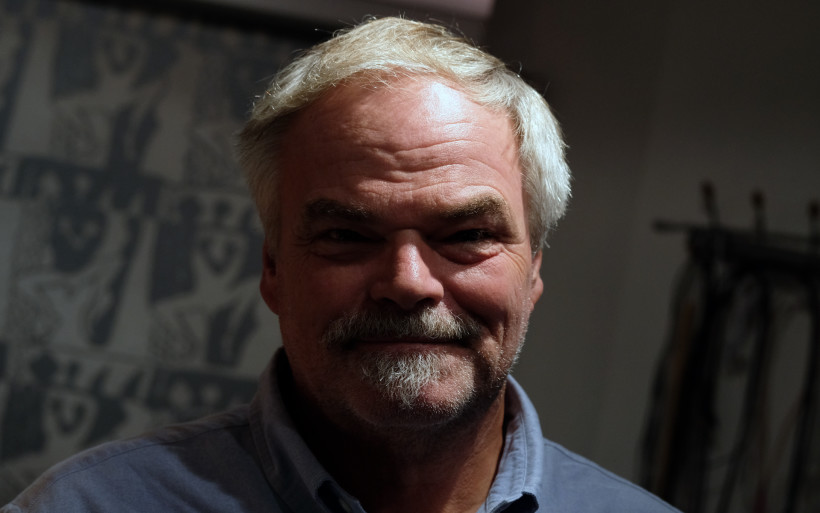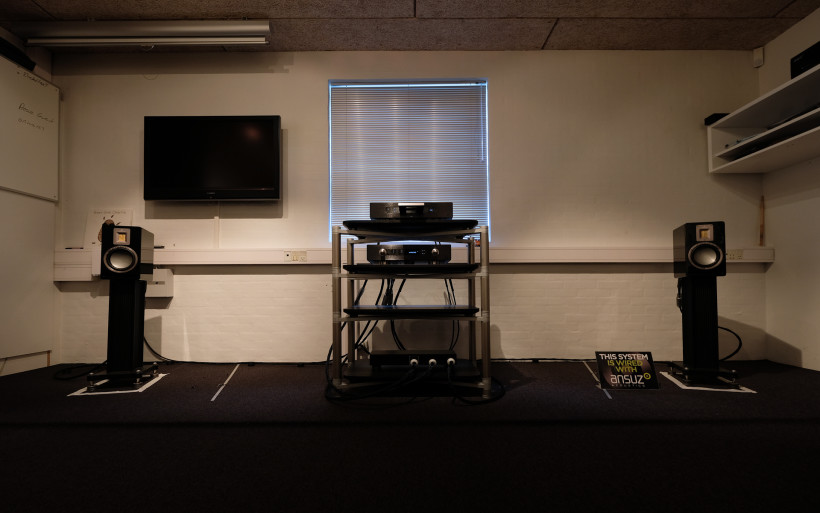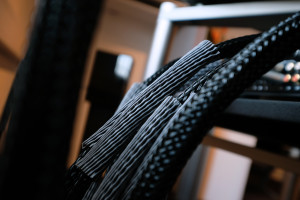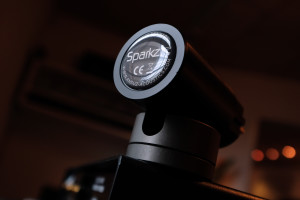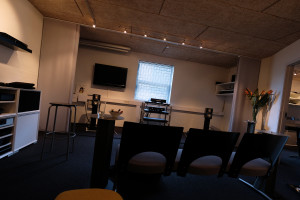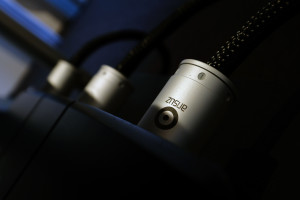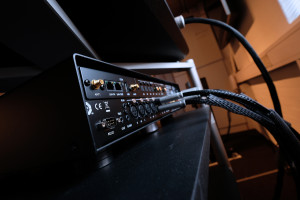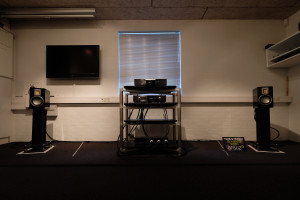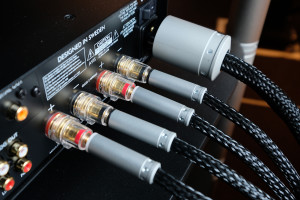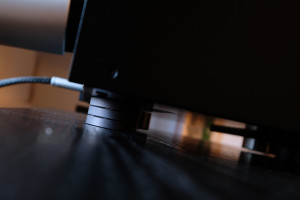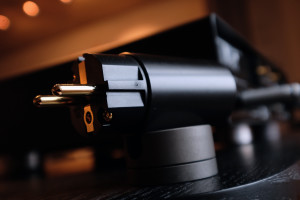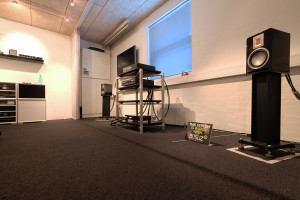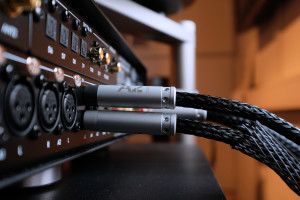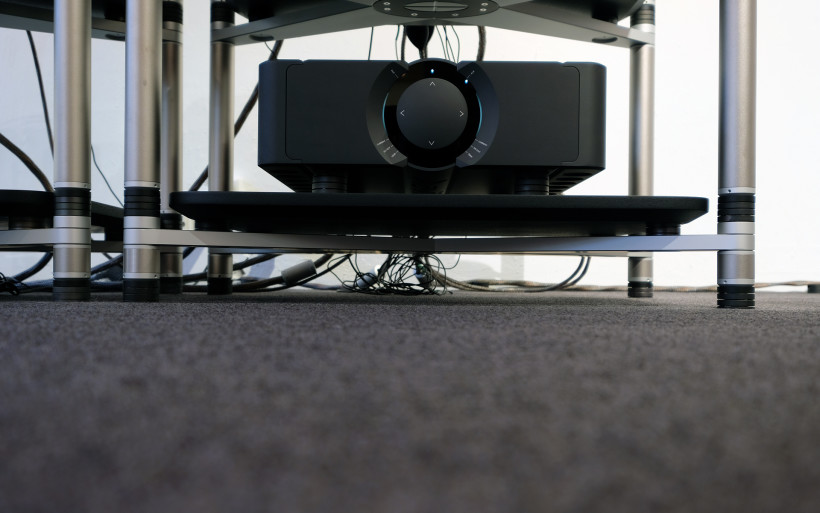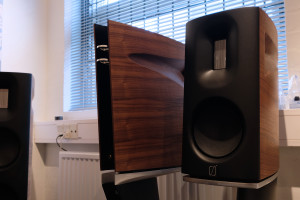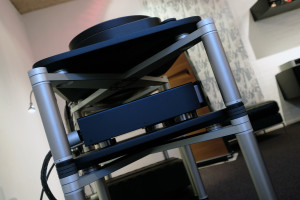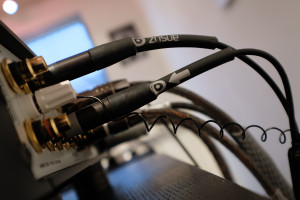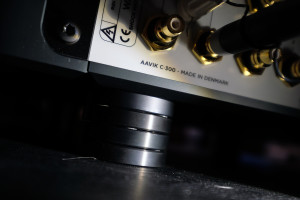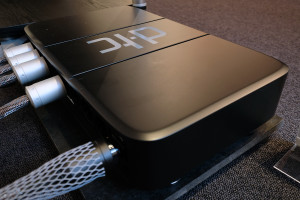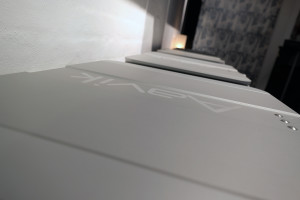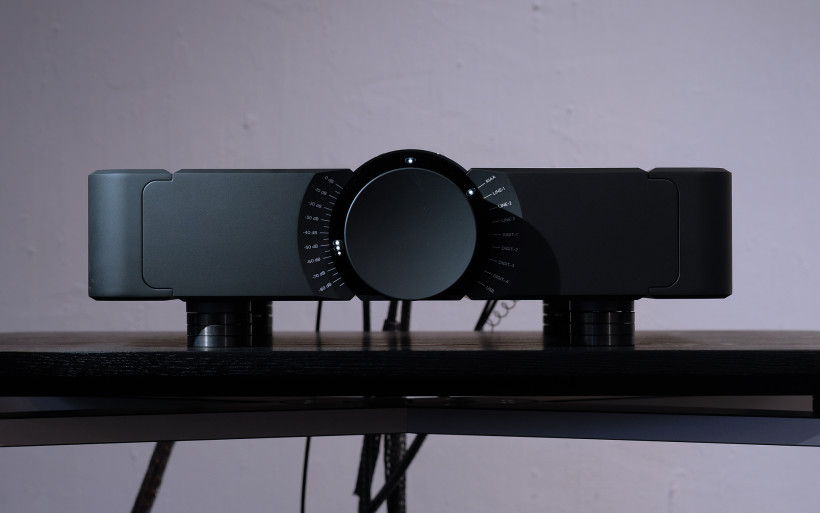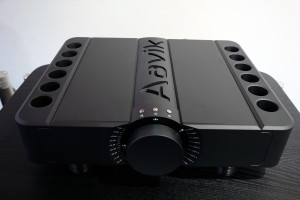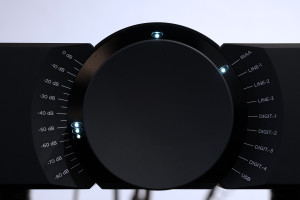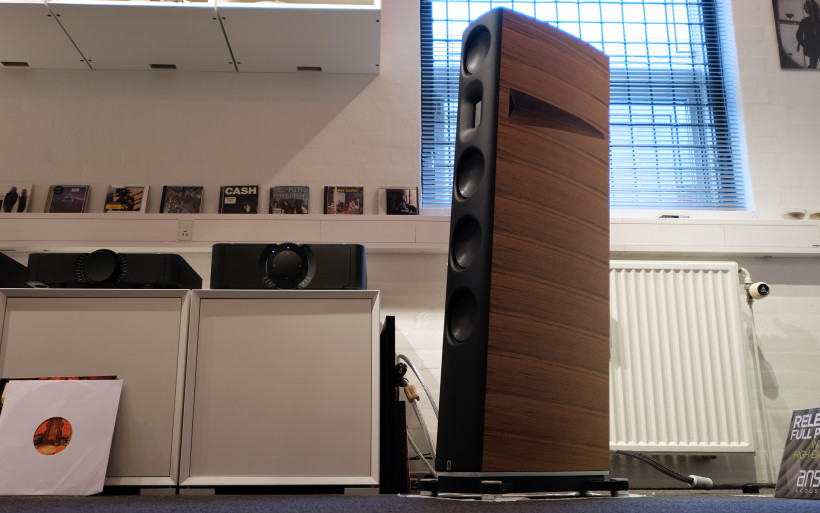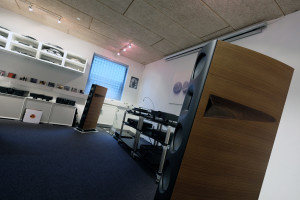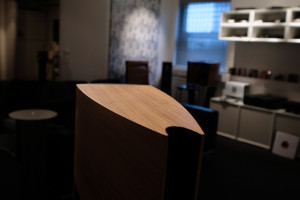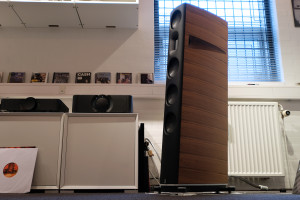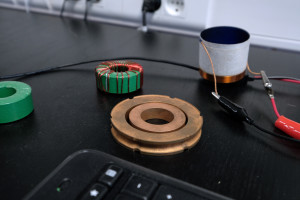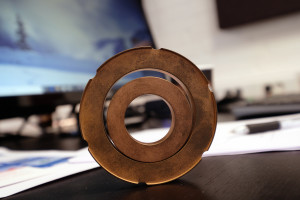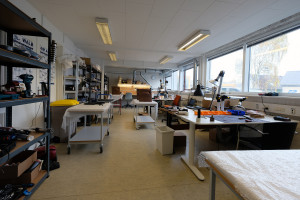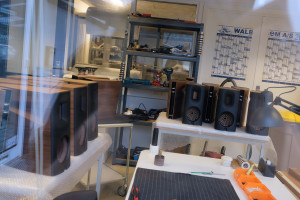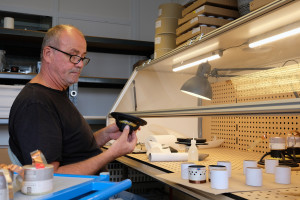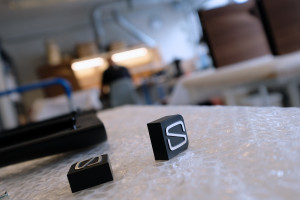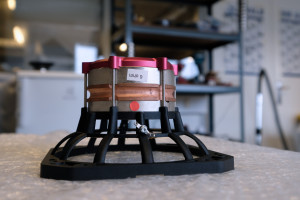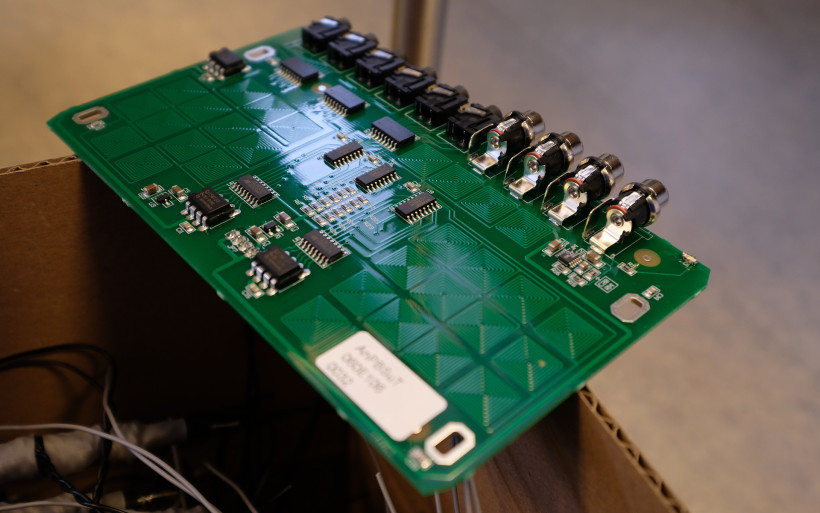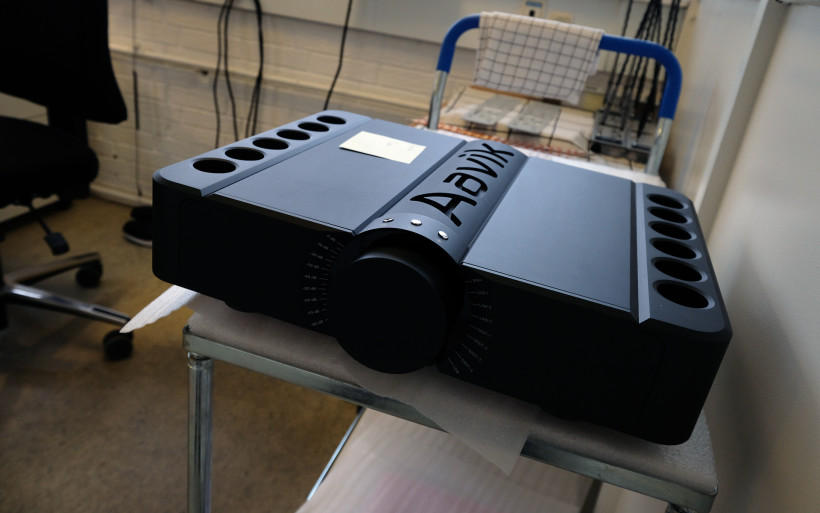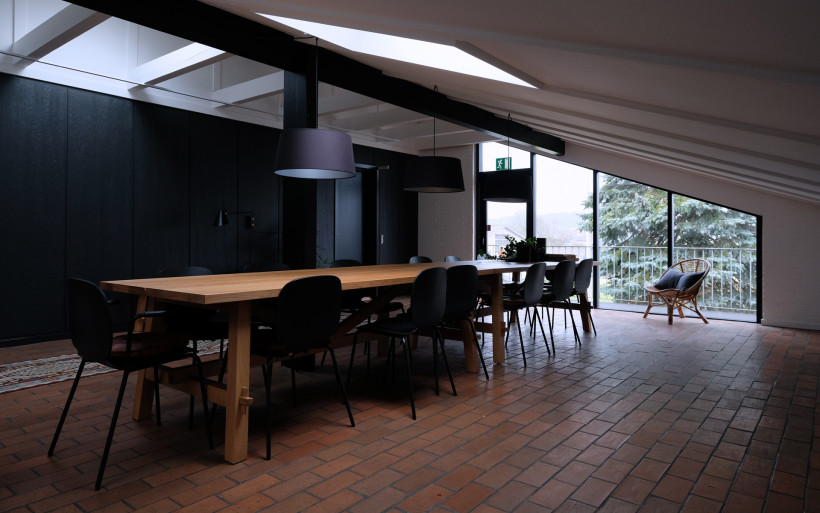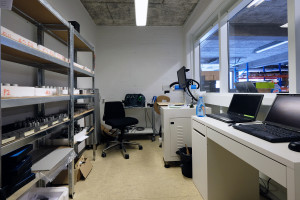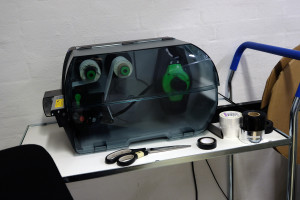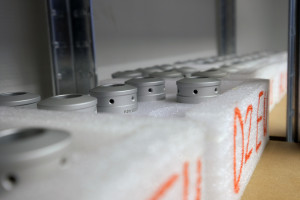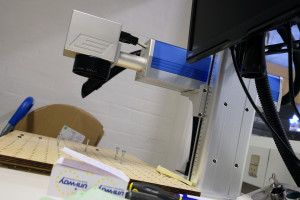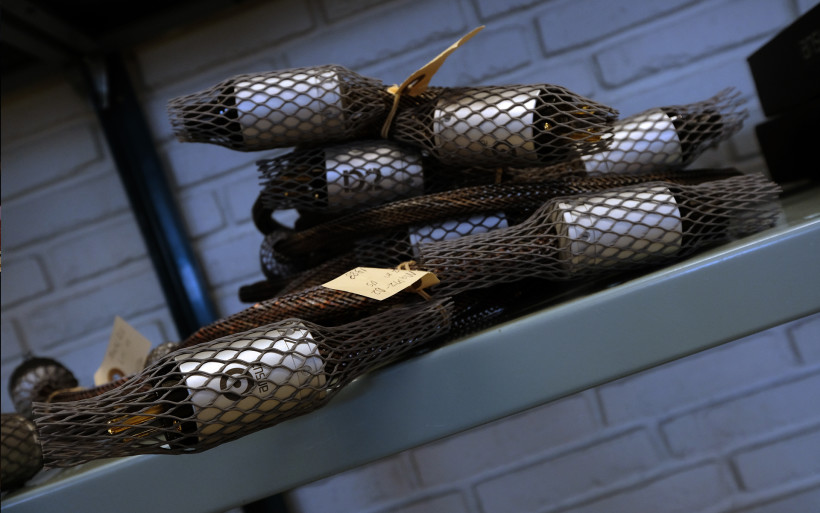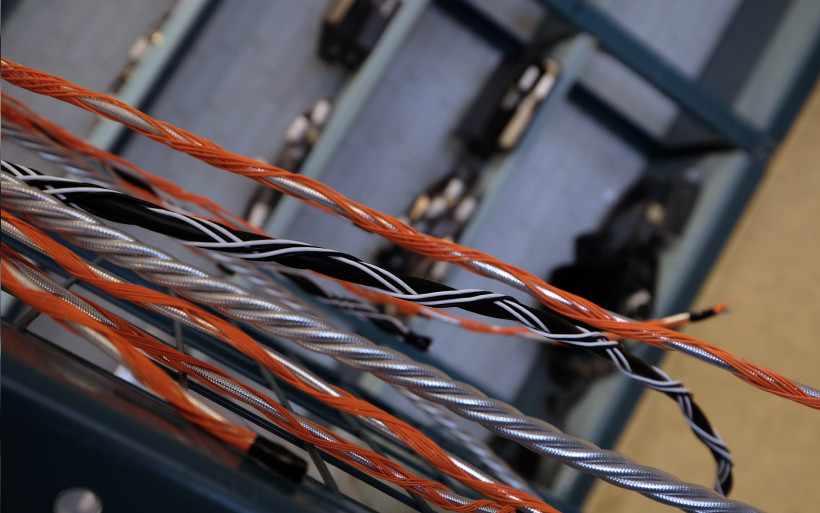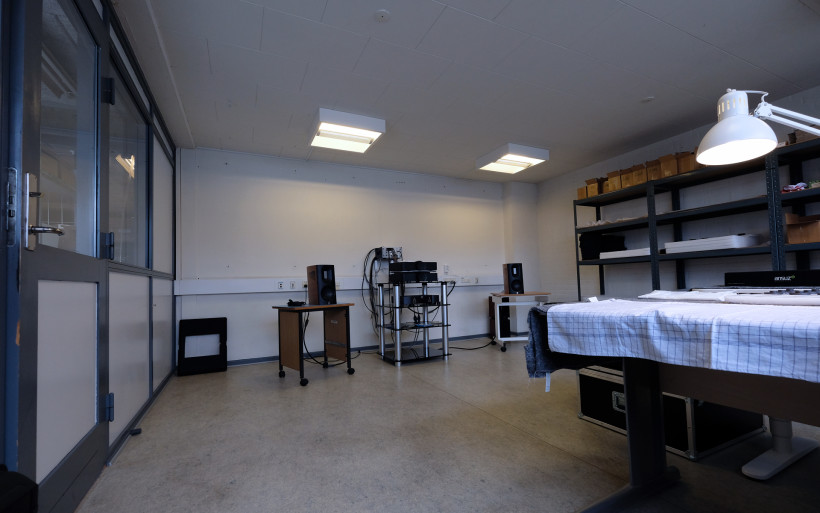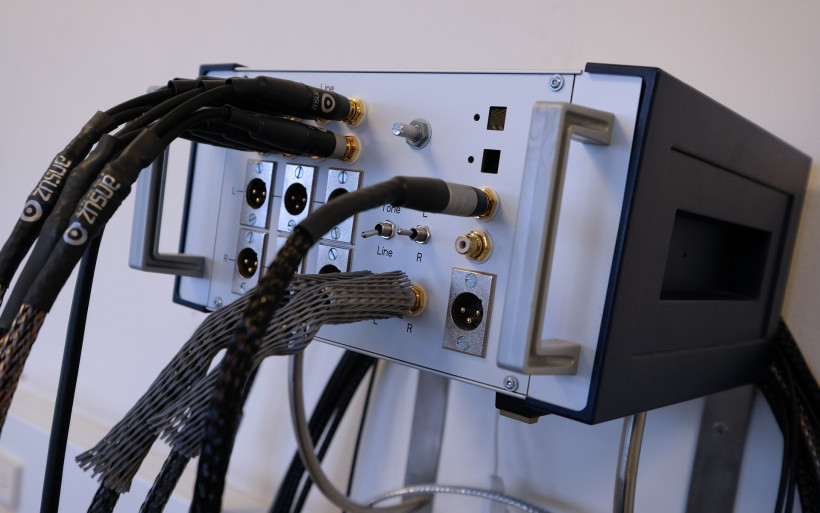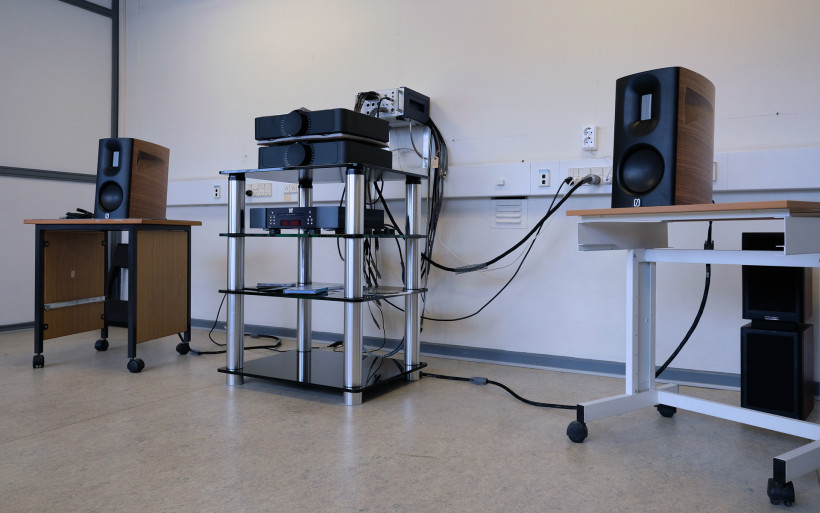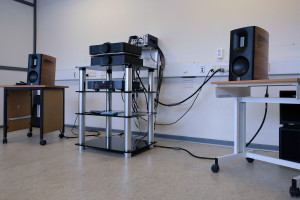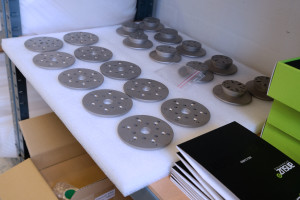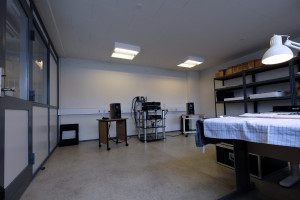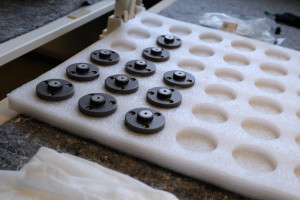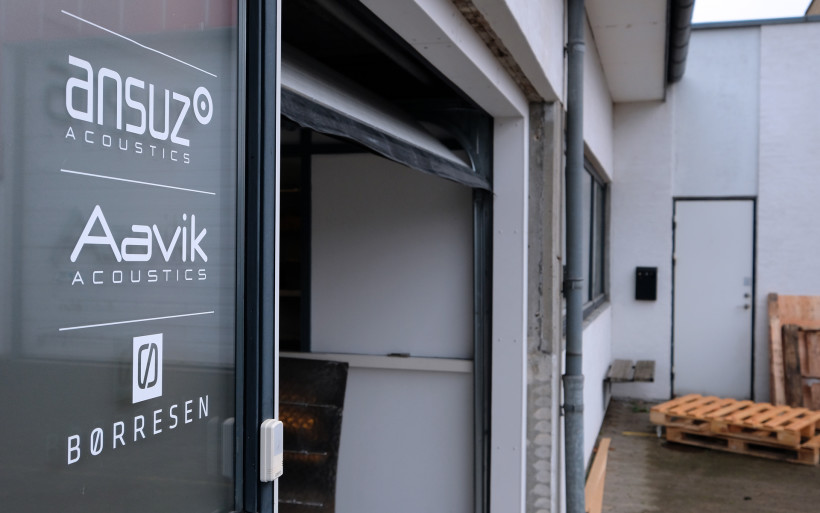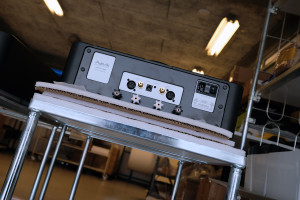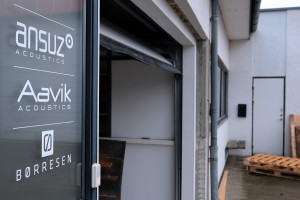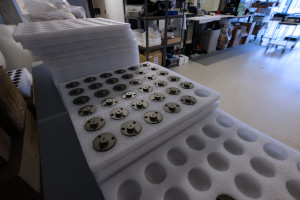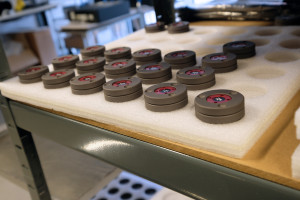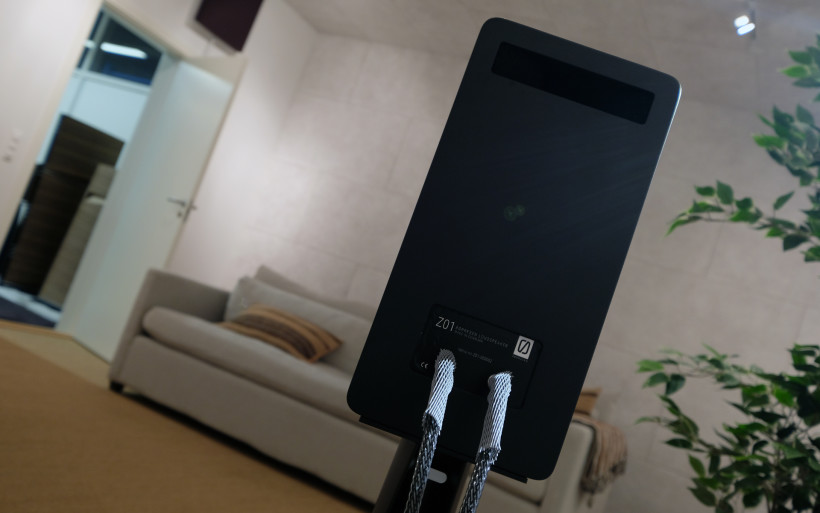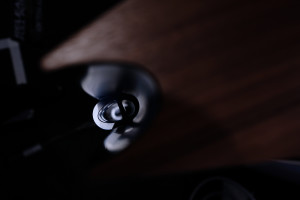Yours truly was recently invited to Denmark’s city of Aalborg, to learn about products by Aavik Acoustics, Ansuz Acoustics and Børresen Acoustics and also meet people behind these luxurious brands. Enjoy!
Introduction
Today’s story started rather innocently about four years ago in Munich. My annual pilgrimage to the High End exhibition resulted in dozens of rooms visited as per usual, but one specific location at the M.O.C.’s atrium area returned with a vengeance just recently. That’s where I saw and heard unusually narrow and unapologetically expensive Raidho floorstanders for the first time. The brand’s name already rang a bell back then and the sound inside was impressive, but lack of experience with objects this costly prevented me from grasping the full Danish message. However, a short chat with one of Raidho’s representatives just outside the place spelled unusually clever hi-tech approach. This was the clear takeaway, whereas “perhaps one day…” is what I thought at that time. Now let’s fast forward to the 2019.  Srajan’s recent trip to the Danish soil was the spark. His thoroughly interesting report involved many products by three brands I already knew about; Aavik Acoustics (electronics), Ansuz Acoustics (cables, power treatment, network switches and racks) and Børresen Acoustics (loudspeakers). This trio housed under the same roof and parent company – UpperLevel ApS – implied a fully blown industrial operation focused on taking the audio world by storm. Who doesn’t write mails shouldn’t expect an answer, hence deeply intrigued I wrote mine. The reply arrived from the UpperLevel ApS’ sales director – Frits Dalmose – who turned out to be the same individual I talked to about Raidho’s technical background several springs ago in Munich. Later on I learnt that luck had nothing to do with our paths crossed again. Not in the slightest.
Srajan’s recent trip to the Danish soil was the spark. His thoroughly interesting report involved many products by three brands I already knew about; Aavik Acoustics (electronics), Ansuz Acoustics (cables, power treatment, network switches and racks) and Børresen Acoustics (loudspeakers). This trio housed under the same roof and parent company – UpperLevel ApS – implied a fully blown industrial operation focused on taking the audio world by storm. Who doesn’t write mails shouldn’t expect an answer, hence deeply intrigued I wrote mine. The reply arrived from the UpperLevel ApS’ sales director – Frits Dalmose – who turned out to be the same individual I talked to about Raidho’s technical background several springs ago in Munich. Later on I learnt that luck had nothing to do with our paths crossed again. Not in the slightest.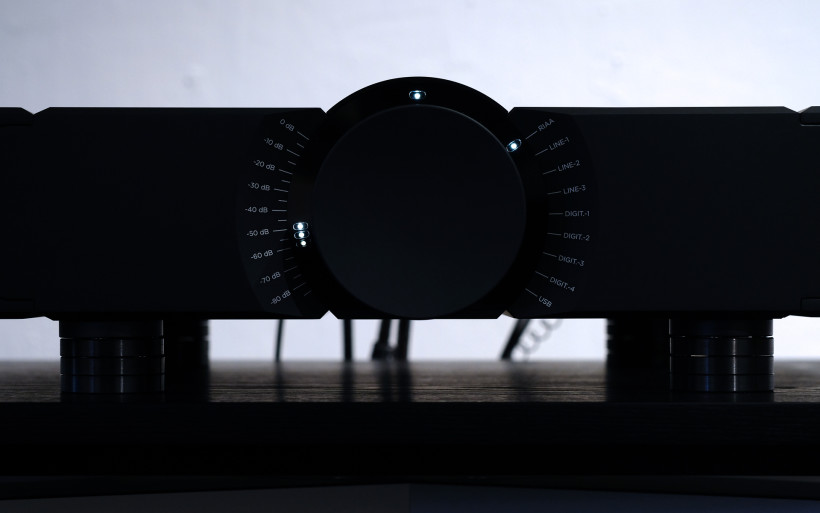 “To give you the best background, I think we must start out with you flying up here for a more thorough introduction to our products. You are definitely welcome!” – Frits wrote and from there the company’s commercial manager – Ann Purkær Plaetner – took over. The three-days long trip to Denamrk included my visit to the UpperLevel ApS’ main facility located in Aalborg and also its showroom in Aarhus. The schedule Ann sent over was as precise as it was packed and the whole planning stage took us three short mails in total. All this already gave me a good taste of how Danes conduct their business. They don’t waste their and others’ time, which is exactly how professional audio establishments operate.
“To give you the best background, I think we must start out with you flying up here for a more thorough introduction to our products. You are definitely welcome!” – Frits wrote and from there the company’s commercial manager – Ann Purkær Plaetner – took over. The three-days long trip to Denamrk included my visit to the UpperLevel ApS’ main facility located in Aalborg and also its showroom in Aarhus. The schedule Ann sent over was as precise as it was packed and the whole planning stage took us three short mails in total. All this already gave me a good taste of how Danes conduct their business. They don’t waste their and others’ time, which is exactly how professional audio establishments operate.
The CEO
Two short flights with a transfer in Copenhagen got me from Warsaw to the Aalborg Airport located in Nørresundby, from where the company’s CEO/co-owner – Lars Kristensen – picked me up. Denmark’s fourth largest city of Aalborg was just one bridge away down south and our trip to the destination place was a 15-minute drive at most. A quick lunch prior to going to the main Aavik/Ansuz/Børresen facility introduced the perfect opportunity to ask my host about how his audio adventure started. Lars spared no details and explained that he got into this hobby young thanks to his father, who was the local audio distributor. Upon retirement, the man entrusted his son with the key to the shop, which then resulted in experience in retail and marketing, extensive familiarity with audio hardware and also acquaintance with one of this report’s key people – Michael Børresen. Lars quickly saw in Michael not only a customer, but the most talented and versatile engineer he’d ever met. They’ve been quite inseparable ever since.
Along the road Lars secured the position at Nordost, at that time associated mainly with military and medical industries. His task was to steer this company towards the high-end audio market and eventually conquer it. Today we know well that he succeeded, whereas Michael’s engineering brain helped to achieve this goal, but also went far beyond cables. Along with Lars they founded the now worldwide famous Raidho brand in 2001, which was sold to the Danish Dantax holding in 2009. After years on Nordost’s payroll, the two gents decided to part ways with this audio house in 2012 and yet again create something of their own, which resulted in Ansuz Acoustics and Aavik Acoustics founded respectively in 2013 and 2014. To fill the gap Raidho left and make the picture complete, the new loudspeaker operation – Børresen Acoustics – officially debuted in Munich in 2019. This brand and also Ansuz represent next-level developments past Raidho and Nordost chapters respectively, but now available under the two Danes’ own flag.
Lars told me that his and Michael’s ultimate goal was not a small DIY workshop but a fully independent industrial scale operation, capable of providing the full audio system to be in 100% in control of the effect. This task took years of work and my report’s fundamental aim is to introduce you to the outcome. With my belly full, I was prepared for whatever was in store for me.
The city of Aalborg
My factory/HQ visit started from a tour of its premises. Unsurprisingly, this 1000m2+ space took a while to see. It accommodates 16 staff members, several listening and warehouse rooms plus assembly lines for three brands in total. In a large area filled with desks just past the main door I met my contact – Ann Purkær Plaetner – and also the company’s product manager – Morten Thyrrestrup. Once asked how he got in the business, this ex-military man explained that two decades in the army far away from home can get to anyone. Upon his return with firm intent to settle down, Morten already enthusiastic about audio met Lars during a building renovation work for him. The two started the you-know-which topic and the former gent was hired one proper job interview later.
The official UpperLevel ApS corporate structure lists three owners; Lars Kristensen (CEO), Michael Børresen (CVO) and Per Mortensen (CMO). Then there’s Anders Petersen (CFO), Emil Kristensen as district manager and Iben Grøndal responsible for logistics. The four people strong production staff includes Helle Pedersen, Andreas Pedersen, Thomas Pedersen and their supervisor Henrik Baade. Bjarne Hansen, Søren Kristensen and Mikkel Simonsen form the tech/R&D team. Ann Purkær Plaetner, Morten Thyrrestrup and Frits Dalmose were already introduced. Upon asking about the CEO’s room, I was informed that there’s none. Not only Lars quickly struck me as a dedicated passionate, but also as a people’s person constantly somewhere among his staff. No privy chamber for his needs alone merely reassured me in these observations.
Past the HQ tour I was led to a cosy attic on the 1st floor. The setup inside was based on Børresen 01 monitors, hardware by Aavik and one of Naim’s streamers. This rig was meant to introduce me to four tiers of two component types by Ansuz; LAN cables and network switches. Here I encourage you to take a look once more at Srajan’s impressions as mine weren’t any different. Each swap by Morten himself made a demonstrable difference, but most importantly a distinctive improvement pattern was formed. After several minutes I understood that the question wasn’t about presence of any changes, but their severity. Upon seeing my reaction, Lars seated next to me smiled. No words were necessary, we were on the same page. He knew that I was fully aware of what just happened.
To frame my findings into a more understandable context, aspects such as backdrop cleanliness, resolution, moisture, slam, spatial presence and outlines, all increased with each move to a higher tier regardless of a product. Both showcased component types behaved similarly and the sensation associated with audible improvements was very much familiar. Witnessed silence injection indicated a job done truly well albeit not new to my ears. However, uniform potency tiered this clearly caught me off guard and the compact and Børresen 01 on duty back then followed suit. These inherently revealing boxes did splendidly in magnifying differences between all levels of Ansuz products, but also filled the room with grand, hauntingly dark, effortlessly served and immensely deep landscape, occupied via finely outlined yet internally dense and very much alive sound sources. Not a hint of bass struggle or boom, but lots of torque and generously applied vividness netted engaging and all in all brilliant result.
 Ansuz Sparkz were found all over the place
Ansuz Sparkz were found all over the place
The main listening room was the next and final stop of the first day. Top shelf goods by all three Danish brands formed a setup fronted via a turntable. I didn’t ask about the total cost of everything in there, but nothing less than a Ferrari of the audio world was the careful assumption. Lars took over, Morten was on supportive standby. Yet again I was introduced to three tiers of two different Ansuz products, this time around tonearm cables (Signalz) and record clamps (Darkz). The experience from the previous room apparently was contagious. The scaling effect once again was as familiar and distinctive as it was clear, but the most valuable personal upshot was the lesson associated with record pucks. Of all accessories auditioned thus far, this breed’s input impressed me the most. As a turntable freshman, I simply wasn’t aware that such items can be this effective. Well, they were. The demo without any clamp versus Darkz D-TC, then T2 and finally T2 Supreme models left me quite puzzled.
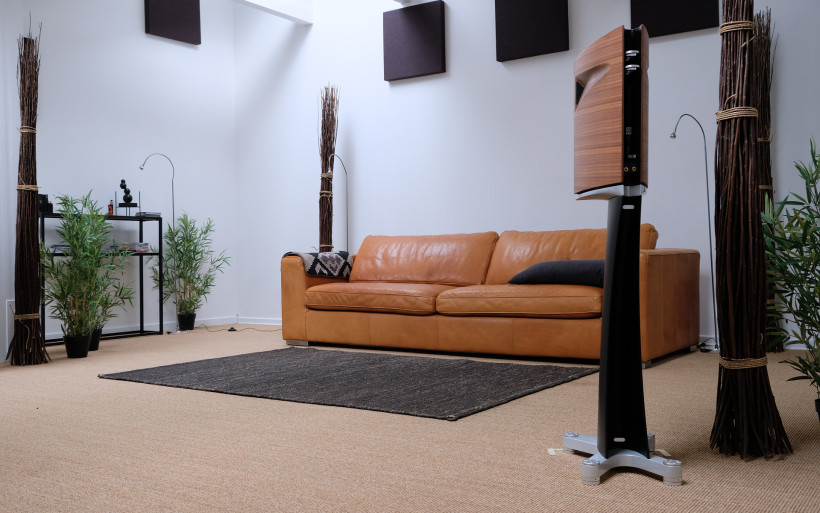 Darkz footers on supportive/decoupling job just underneath the 01 stand
Darkz footers on supportive/decoupling job just underneath the 01 stand
Uniform behaviour across the board, similarly scaled potency increase and not a single fail along the road, were clear indicators of a grand master plan in the works and not a coincidence. I already knew that low noise floor with all associated benefits is usually the outcome of multiple and specific measures. But insight into these was two days away, my conversation with Michael was precisely filed in the schedule just as everything else was. At this point all demos were sorted, so now all three of us could listen to music casually. SPL comparable to a live gig absorbed up close is how Lars and Morten enjoyed Rammstein’s latest LP, which is exactly how I treat myself with such music. I was game.
Where most speakers known to me would’ve lost it, Børresen’s top shelf specimen just kept going up and up to no end. It sounded exceptionally clean and coherent, but also raw, perfectly effortlessly and utterly powerful. Regardless of volume level it roared and slammed on demand like it was nothing. The petite 01 model in a far smaller room upstairs also took high SPL with dignity and proved to be dynamically very capable, hence this attitude had to be one of the Børresen family’s traits and soon I learnt why. Still, the largest Danish floorstanders turned the sheer fun factor up to eleven, just as a product with far larger cone surface and on duty inside of a far bigger room should. And lastly, for purely educational sake Lars introduced me to The Beatles’ “Let It Be” 2015 remaster, considered as quite listenable by his standards and perfectly enjoyable by mine. Past a short audition the man took his secret weapon out, the first pressing of the same album. This decades-old vinyl sounded much better in comparison and there was no question about it. However, all differences between the two black discs served utmost explicitly and pinpoint accurately was the true highlight of the audition. Needless to say, the Aavik/Ansuz/Børresen setup in front of me had a major role in this.
The Aarhus showroom
The second day started from a trip down south to Denmark’s second-largest city – Aarhus. The UpperLevel ApS’ showroom located there and managed by Frits was the goal. On the spot the man explained that him and Lars have known each other for decades, so his place in the ranks of the latter’s company wasn’t a mere coincidence. The man of the Aarhus house was where he wanted to be.
Frits started his presentation from a trick, which involved a system hidden behind a curtain. Lars only smiled. I couldn’t tell whether their aim was to test my ears, eyes, brain or everything at once. Nothing of the sort happened, but I had to give it to both gents, they surely knew how to build tension and demo their products truly convincingly. In any case, past the brief yet enjoyable audition I reasonably put my money on Børresen’s 01 model along with Aavik’s hardware as residents just behind the backdrop, but small affordable monitors by Audiovector plus Primare’s CD player and integrated amp were unveiled instead. Ansuz rack, power distributor, footers and cables were the obvious twist, meant to prove me how fast performance of this setup could shift. Frits walked me through input of listed items as efficiently and swiftly as Lars and Morten did one day earlier. Product types different than before were involved, but the result of each swap and move up or down on the quality ladder was pleasantly familiar.
Many adventures with power cords and strips/conditioners led to my decent familiarity with such items, however demonstrable input of all Ansuz decoupling feet surely was new. Most people would view a power bar on a not exactly affordable rack and decoupling pucks in-between as a major case of excess and bling, except this time around it clearly wasn’t. To prove the point, Frits put the Ansuz Mainz8 box on the floor directly, which resulted in musical landscape instantly collapsed; it became grainy, less vivid and nowhere near as developed and breathable. Then the quite similar effect the man replicated with Primare’s CD player with and without Danish decouplers underneath, but the demo was far from over. If replaced by something else not by Ansuz, this brand’s entry-level power snake between the wall outlet and showcased power strip netted the alike outcome too. Heck, even Sparkz sorters on and off duty were audible, to a lesser degree but still. Point being, each showcased Ansuz item influenced sonics without a miss, and did so accordingly to the key already recognized the other day.
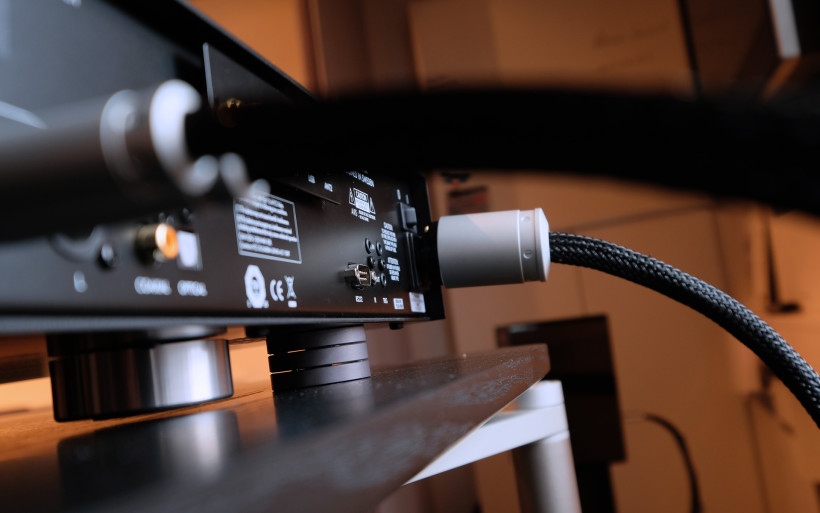 The entry-level Ansuz Darkz puck in action…
The entry-level Ansuz Darkz puck in action…
The final blow Frits delivered via a jazz track with noise of a city recorded in the background. All subtle particles, talks, car horns, footsteps and wind were present, clear and sensible with Ansuz items included, or diluted, unclear, distant and veiled without these. The shift was anything but subtle.
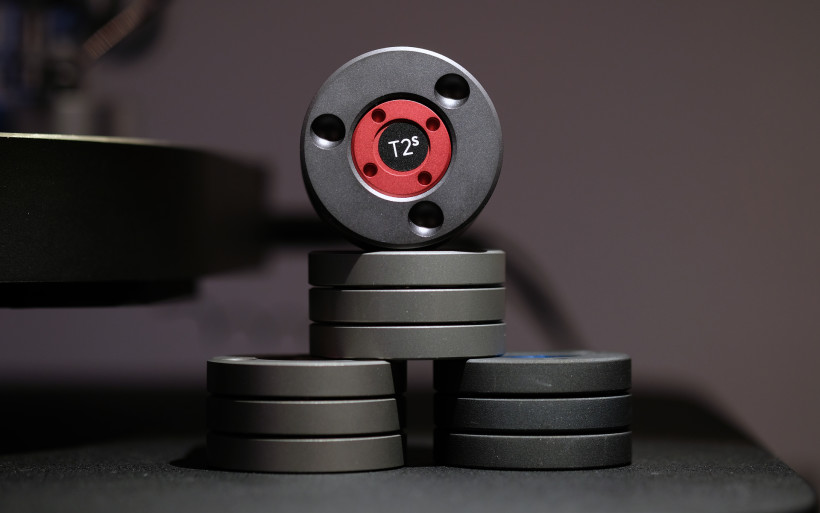 …and its top tier version up high – the T2 Supreme…
…and its top tier version up high – the T2 Supreme…
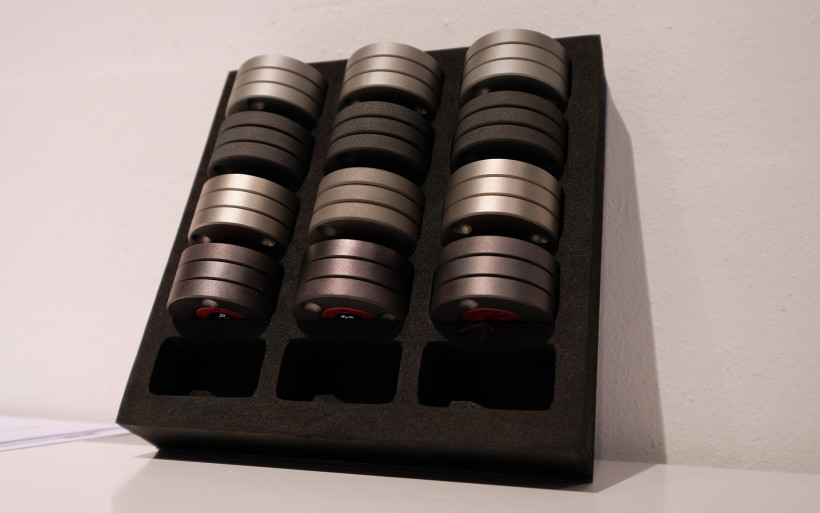 … but both taken directly from the handy compartment up above
… but both taken directly from the handy compartment up above
The next door revealed a larger room occupied by far costlier and heftier items. All Aavik’s hardware was on display up close, so I took my time to admire it. Subjectively speaking, for years this stuff has been second to none in my book as far as visuals in audio go. Frits had a story to tell on the subject.
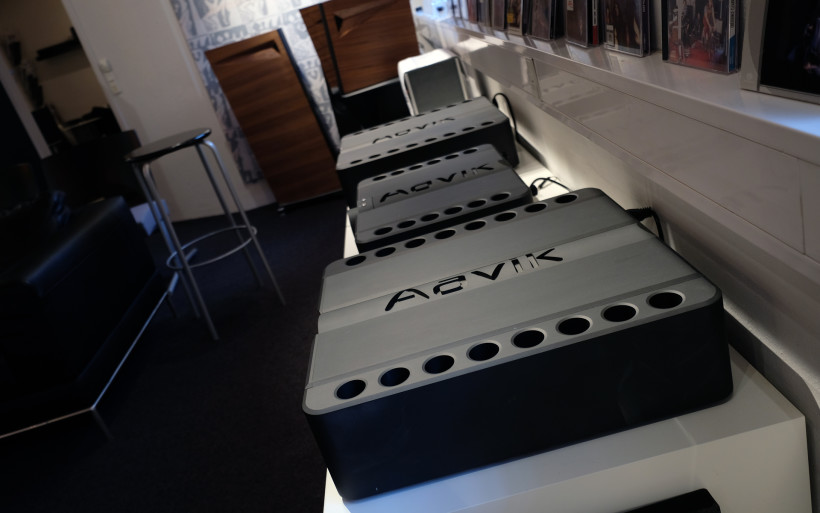 Aavik’s top-shelf mono amps with a preamp in-between, all pleasantly warm and ready
Aavik’s top-shelf mono amps with a preamp in-between, all pleasantly warm and ready
During one of their road trips way in the past, him and Michael had a lengthy conversation about design of the back then upcoming Aavik’s hardware. Frits described to his companion the idea of a product three-dimensional, with minimalist radiators on both sides and a substantial rotary multipurpose tubular shape in the middle. The last listed element Michael labeled as unrealistic and impractical right from the get-go, on the contrary to a hefty knob. After one night’s work the man had a render finished and ready to show to Frits. Minor changes aside, it looked exactly like Aavik’s U-300 integrated amplifier as we know it today.
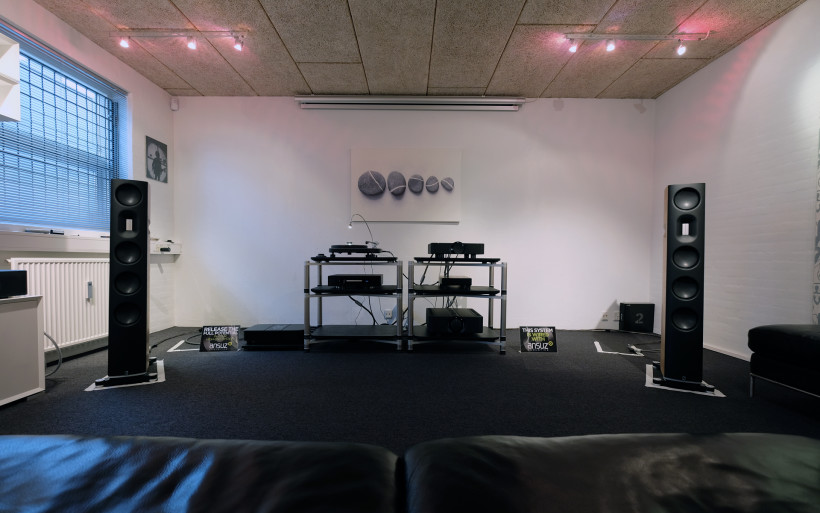 The battlefield where Nordost’s TOTL warrior fell
The battlefield where Nordost’s TOTL warrior fell
In the larger room Frits had for me the final presentation of the day, this time around supported via Aavik’s top of the line machines and Børresen’s 03 floorstanders, all wired with Ansuz loom. This demo had me focused on Danish power cords, distributors and grounding boxes. My host started from influence of a power cable in-between the main outlet and a power distributor. At this key junction, each level above the previous one resulted in musical canvas more pristine and darker, contours outlined better, gutsier and tighter downstairs plus greater, more sensible and organic spatial presence. That’s what quality power components should do, but yet again I was surprised by clarity and magnitude of all listed differences. Not even slightest sonic shift could hide from Børresen’s loudspeakers.
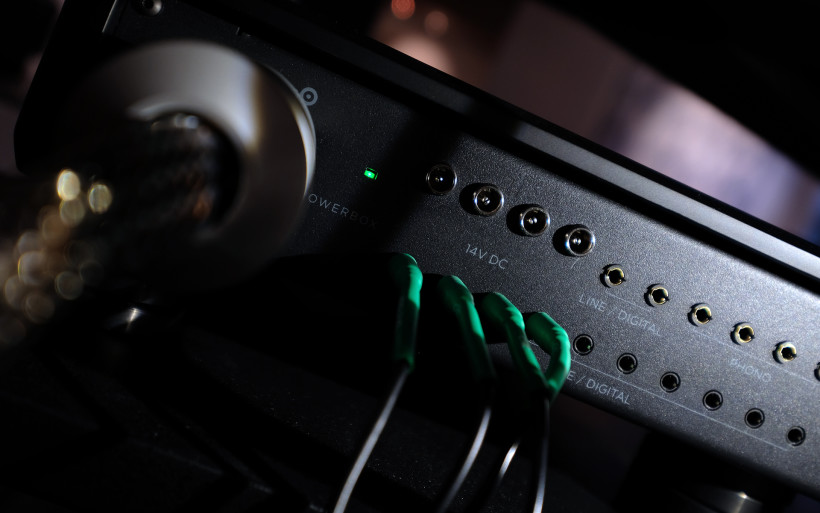 At some point the Ansuz Powerbox joined the demo
At some point the Ansuz Powerbox joined the demo
 Aavik U-150 integrated amp visually presented itself not as the U-300’s scaled-down version, but something truly different
Aavik U-150 integrated amp visually presented itself not as the U-300’s scaled-down version, but something truly different
Even though I didn’t mention it before, one of the most important observations past all Ansuz exercises was associated with a major quality spike on the very top. Each time I thought that the shift above the second best tier couldn’t net any significant improvements, it always introduced the biggest. This brand’s flagship line seemed to be scaled more effectively in comparison to any other level, or perhaps not scaled at all versus everything below toned down. In any case, that specific top-drawer twist led to my at least partial understanding of the rationale behind its representatives’ undeniably steep ask.
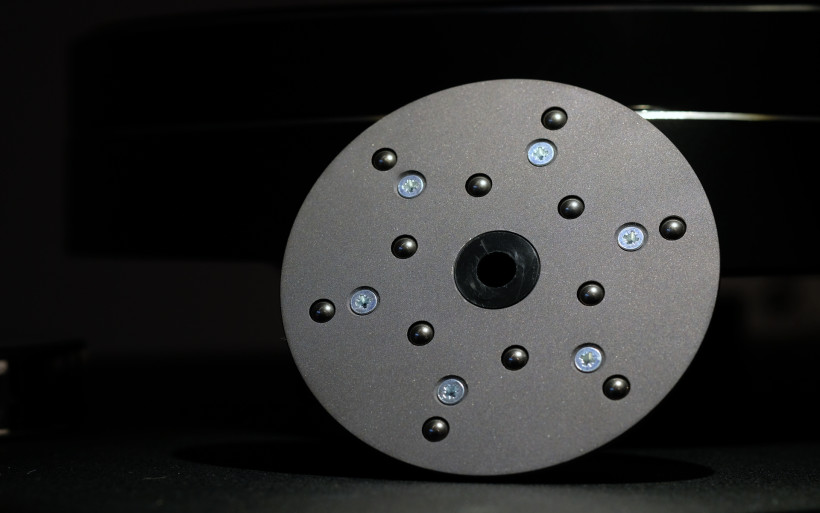 The most surprising item’s underbelly…
The most surprising item’s underbelly…
Frits didn’t even go to top of the line Ansuz power cord, this family’s second best was where the man drew the line. But the most interesting thing happened during the audition of a model one tier below – Ansuz C2 – used at the first setup junction. At some point this item made room for Nordost’s far pricier Odin II power cable. The latter rather rapidly proved to be audibly slower, grainier, less inviting and with the image tightly locked in-between speakers mainly. The swap was quick, transparent, no tricks factored in and the outcome was what it was. Many listeners would label it as a severe downgrade, the Norse god got beaten to a pulp. Not a surprise considering the two Ansuz owners’ years-long Nordost track record. Once all blood stains were mopped, it was high time to head back to my hotel.
The CVO
The last day’s plan listed Michael as my tour guide plus some extra time to wander around the main facility, talk with employees and also to take photos. The designer’s desk was the first stop, where he revealed several firm design principles all three brands are based on. In the end, everything comes down to low noise floor and every measure leads to it. That’s the short and understandable version, but with multiple specific subjects hidden underneath.
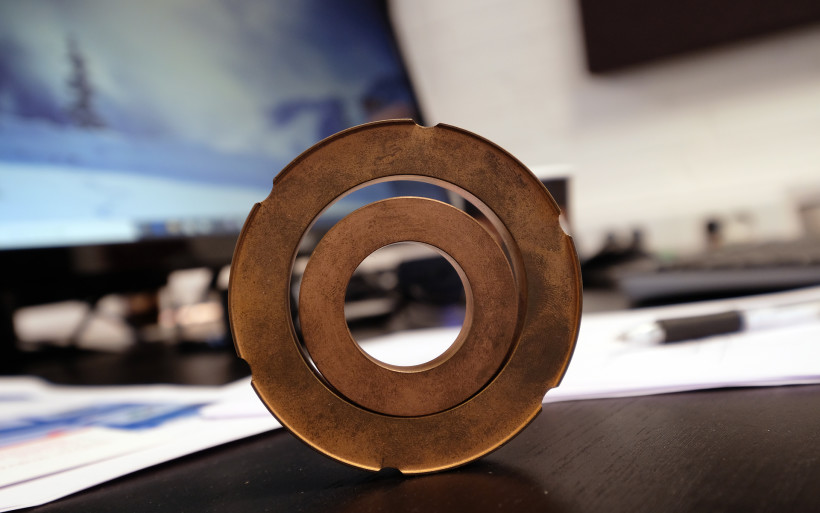 Copper poles not only decrease voice-coil inductivity, but also are efficient heat sinks
Copper poles not only decrease voice-coil inductivity, but also are efficient heat sinks
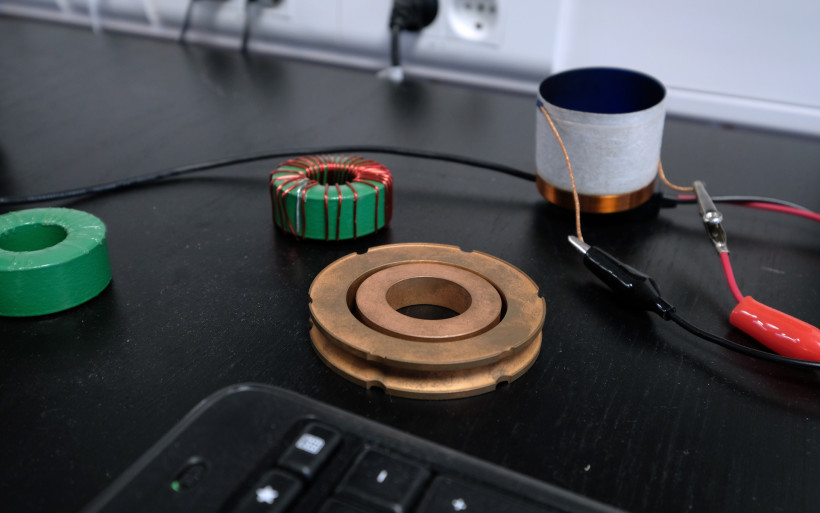 A small thing, yet significant enough to now be patent pending
A small thing, yet significant enough to now be patent pending
At first Michael presented two copper pole rings as found in each iron-less motor used in Børresen transducers. On duty were the same magnet system and voice coil connected to my the man’s handy desktop measuring rig. Copper objects versus a typical iron piece returned two clearly different results in Dayton Audio’s DATS V2 software. Michael’s rings lowered inductance of showcased voice coil and its better linearity, more current into a driver, its strokes faster and lower acoustic impedance peaks were key upshots. Since this topic tackled loudspeakers, the location where these products were put together was our next stop.
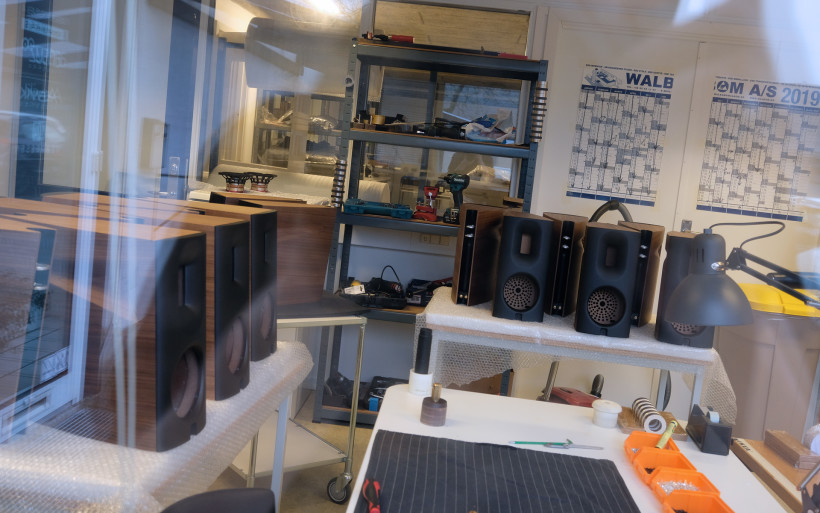 Which enthusiast wouldn’t like to go inside seeing all this?
Which enthusiast wouldn’t like to go inside seeing all this?
The assembly room Michael led me to, was in fact the first one noticed just prior entering the facility’s main door. Whilst standing outside the building, through large windows to the right I saw a number of empty cabinets fully ready to accommodate all components and in effect flourish into finished products. Now I could see those enclosures up close, touch them and witness how stiff and acoustically dead they were. All Børresen cabinetry arrives from the Sino factory, also known as a subcontractor for Sonus faber and Dynaudio. Each Danish baffle is easily removable to provide easy access to drivers in the event of failure. Proper audio establishments take unfortunate accidents into account just as everything else.
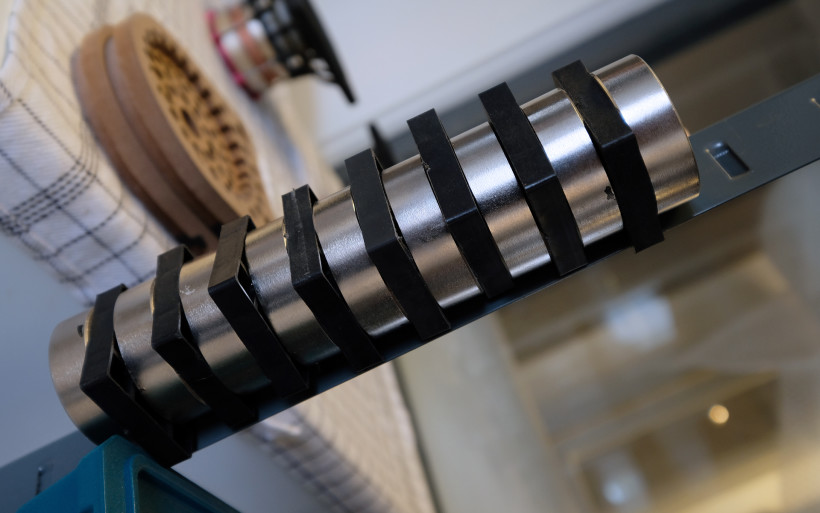 The “Caution!” sign wasn’t necessary…
The “Caution!” sign wasn’t necessary…
A battery of neodymium magnets of the highest grade (N52) separated via plastic blocks sat up high on one leg of a component rack, hence was quite unavoidable to see. I was advised to not try and merge these super-powerful objects together. Once that’s done, not only they’re quite inseparable, but also strong enough to crush a finger trapped in-between. The more flux a magnet creates, the better control over a driver it has, but that’s just one out of many factors to end up with a desired result.
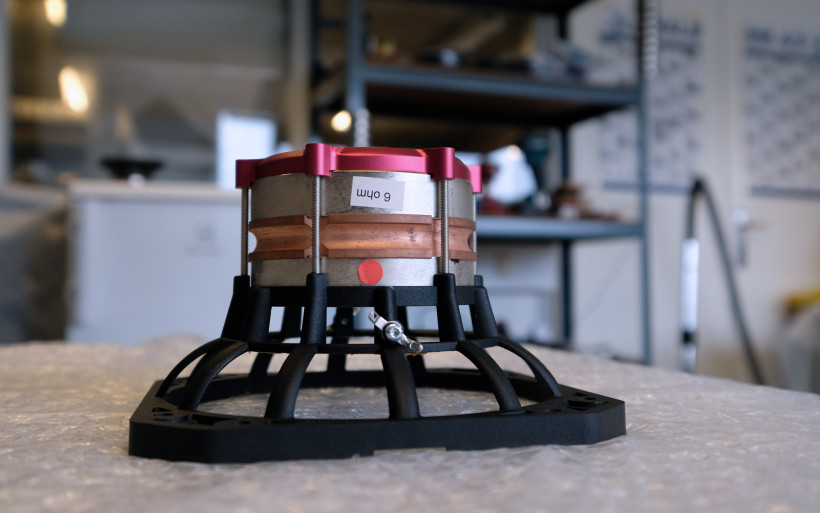 The mid/woofer with its bigger copper pole in the middle
The mid/woofer with its bigger copper pole in the middle
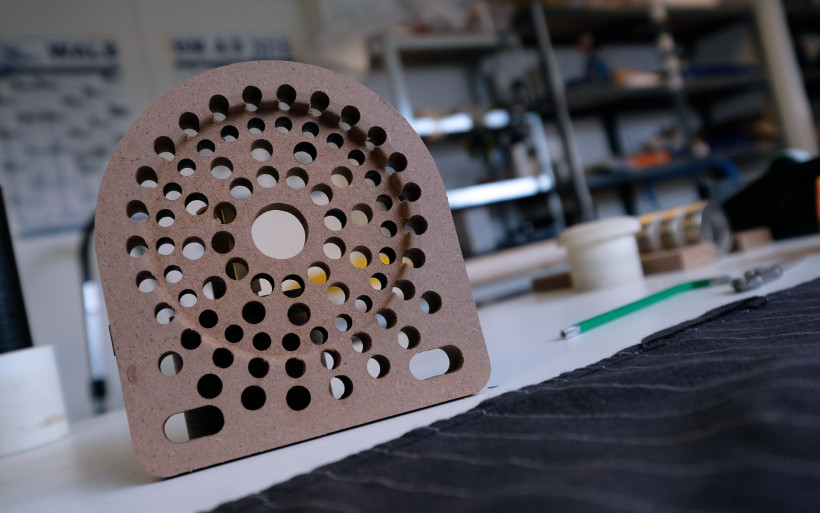 The supportive HDF board ready to be installed
The supportive HDF board ready to be installed
 Partially assembled mid/woofer with its suspension, cone, spider and a voice coil already combined.
Partially assembled mid/woofer with its suspension, cone, spider and a voice coil already combined.
Børresen mid/woofers incorporate voice coils based on titanium formers to have their inductance as low as possible, whereas used baskets are as open as they can be to net better airflow, which leads to improved compression inside of a box. Listed parts arrive to the Aalborg facility separately, however each driver is assembled on the spot. Transducers used in Raidho products became famous for their sandwich membranes. Unsurprisingly those installed in Børresen’s models are no different on this count, on the contrary to materials, picture wings of Formula One race devils; two carbon fiber layers with a honey-comb Nomex core in-between. A very stiff and light cone is the outcome, then married to all remaining elements on a 3D-printed jig.
 The loudspeaker assembly line in its full glory
The loudspeaker assembly line in its full glory
Just behind each mid/woofer there’s a place for a perforated HDF insert. This element’s openings form a pattern, which results in pressure behind the driver bigger than anywhere else in the cabinet. Transducers in there are acoustically invisible one to another in effect. Air pumped via a mid/woofer cone’s rear strokes goes through a perforated wall first, then hits an enclosure’s second chamber and from there escapes via its rear port connected to several anti-turbulence vanes just outside. No interaction between drivers, clarity plus optimized and controlled air propagation in a room are the goals of this thoroughly engineered venting route. Each Børresen specimen I auditioned, struck me as not boomy at all regardless of SPL, and of quite sealed-box alike feisty downstairs performance just because. Past everything I’ve been shown and told, no wonder all these products integrated so well in their respective spaces and kicked this hard.
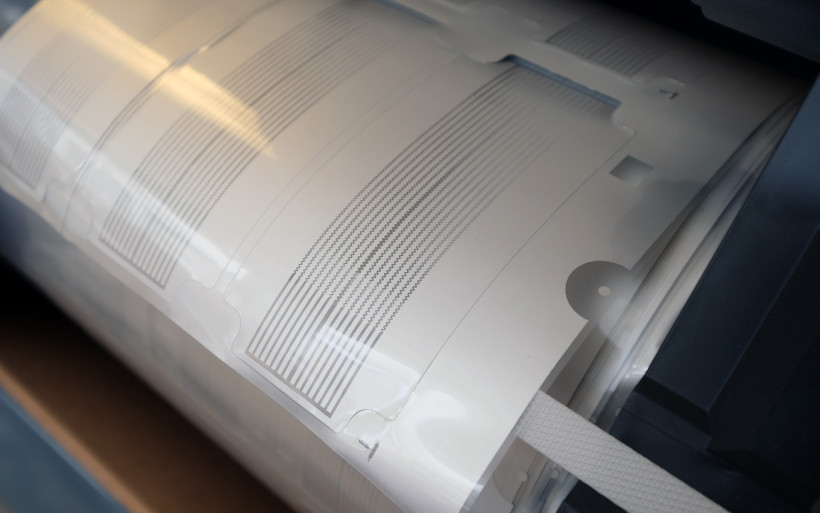 It’s surprising how durable Michael’s ribbon membranes are. The spool had hundreds of them.
It’s surprising how durable Michael’s ribbon membranes are. The spool had hundreds of them.
Michael explained that he’s not a huge fan of extremely exotic x-over parts, especially capacitors, on the contrary to making his own and turning those he doesn’t into as mechanically stable versions of themselves as possible. That’s why Børresen loudspeakers include this brand’s proprietary caps, mixed with larger ones coated in resin and then baked to have them silent. Lars and Michael both listed mechanical grounding and resonance control as universal and fundamental in pursuit of silence. As such, these measures are applied both on their crossovers and just below as well, each such an element sits on three Darkz pucks mounted inside of a cabinet, hence invisible.
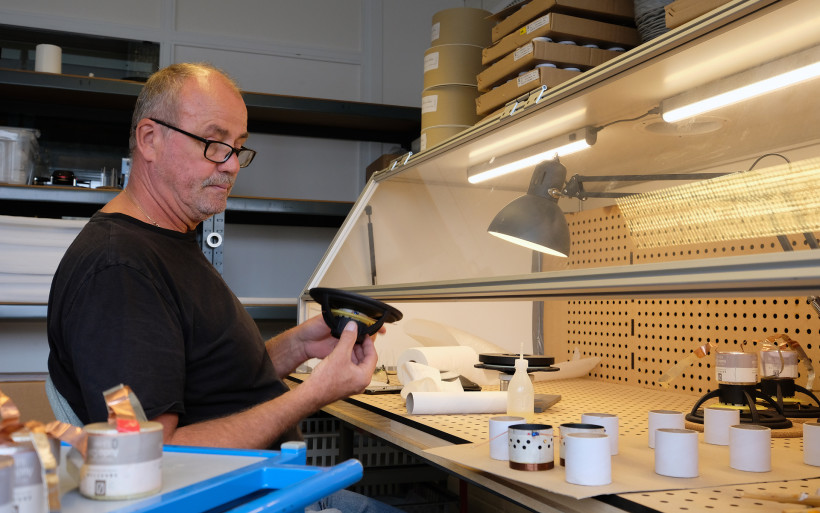 What looks like baskets on the photo above, in reality isn’t. Those are 3D-printed jigs used during the driver assembly process
What looks like baskets on the photo above, in reality isn’t. Those are 3D-printed jigs used during the driver assembly process
The last component Michael showcased in the loudspeaker assembly room was his signature ribbon tweeter. Its large membrane based on a nylon/aramid substrate coated via aluminium layer not only weighs next to nothing (0.01g), but is also thermally stable up to 600C°. Let’s add high efficiency of 96dB, easygoing (6Ω) impedance load and the very same powerful N52 neodymium magnet, this time around perforated. The tweeter operates without a transformer and as a dipole with its rear strokes escaping via two mirrored triangular openings found on each Børresen enclosure’s cheeks. The main production room was our next stop.
The HQ once again
By mentioning to Michael my observations associated with uniform behaviour of all Ansuz products, in an instant I was bombarded with more details than I could grasp. The man himself is very much into different materials due to their various properties. He explained that each its type resonates differently and some of these resonances can be useful in audio. For example, all Ansuz Darkz pucks look very much alike at first glance; three layers of discs with 2 x 3 ball bearings in-between form a decoupling device. Slight colour shift aside, one could assume that all four tiers of these items are all the same. Truth told, that was my early guess as well. Wrong.
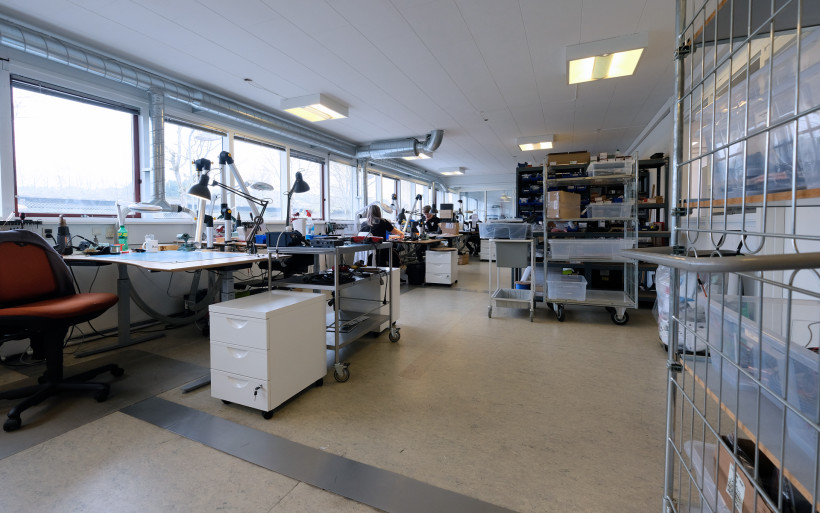 That’s the place where all cables, amps and power products are made
That’s the place where all cables, amps and power products are made
Entry-level Darkz models (C2t) have their discs made of anodized aluminium, the next two tiers sport the same material hard-anodized (D2t) and extra hard (T2). The fourth and final stage has all three round shapes made of not aluminium but titanium (T2 Supreme), then bombarded with particles at the Aarhus university to develop several layers (tantalum, scandium and diamond) deeply etched into the primary surface. This process changes properties of base discs by shifting their resonant mods, is long and involves a particle accelerator. Top tier Darkz pucks have their skins fully developed after 60+ hours of treatment. Unsurprisingly, all this we see on the Darkz T2 Supreme’s hefty final tab. But most importantly, from this story we also learn two things; titanium is one of the most cherished materials at the Aalborg house, and top level performance at times can be achieved only via very costly measures.
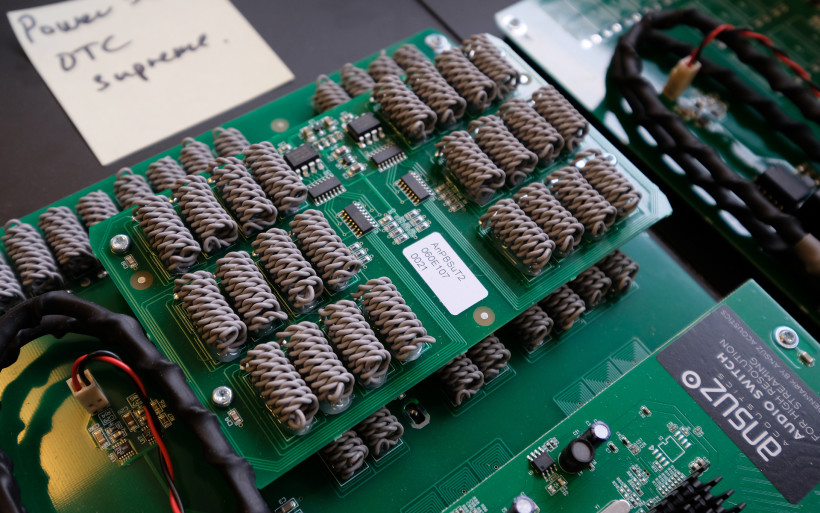 Numerous Tesla coils as found inside of Ansuz TOTL LAN switch
Numerous Tesla coils as found inside of Ansuz TOTL LAN switch
Next Michael introduced me to two universally useful features applied in various products. Many twisted pairs of gray cables, as seen inside of i.e. Sparkz plugs, naked Mainz8 power bars and LAN switches, are known as Tesla coils. Their principle based on two oppositely polarized and then twisted wires to cancel their magnetic fields and suppress noise in effect, on fundamental level struck me as similar to the C-MARC tech by LessLoss. Multiple coils in Ansuz products don’t resemble Litz hairs found in Lithuanian cables, however both brands’ awareness of what this clever cancellation does to a signal, or rather how effective it is, is the same.
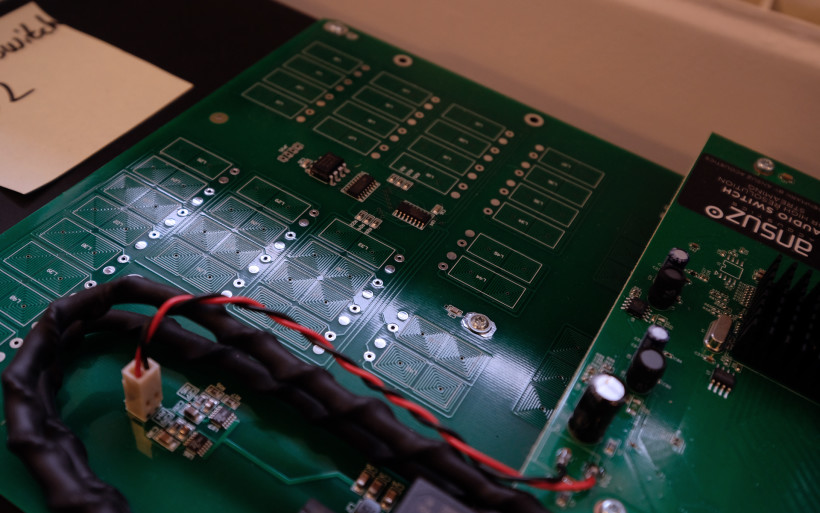 Multiple silencing square traces etched inside of a LAN switch…
Multiple silencing square traces etched inside of a LAN switch…
I saw multiple wire cuts dressed in thick black heat shrink tubes all over the workshop; in power distributors, LAN switches, amplifiers and even loudspeakers’ crossovers. I was told that these parts prevent cables from acting as antennas. Additionally many products incorporate Michael’s dither technology developed way back in the Nordost days and pushed further in Ansuz. This scalar design is based on how marine sonars operate, namely it modulates ground noise floor via injection of squared frequencies into signal. All listed measures add up.
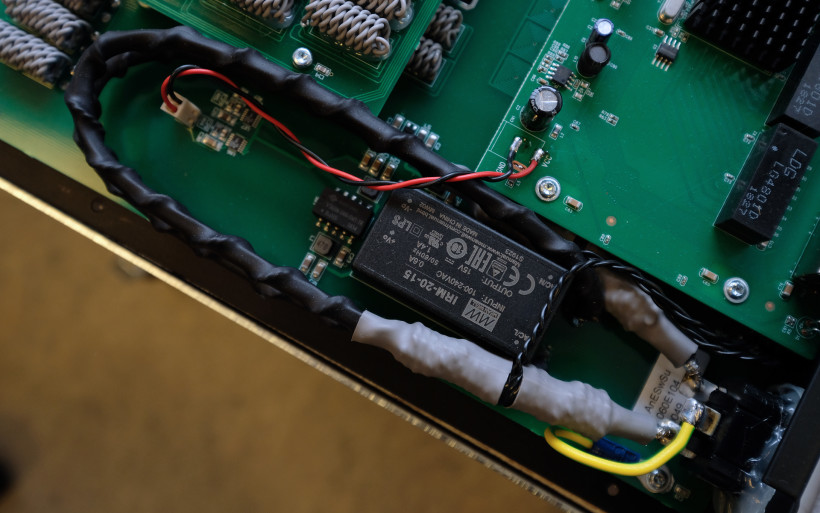 This black cable with coils underneath was found in amps, line stages, power distributors, loudspeaker crossovers and then some
This black cable with coils underneath was found in amps, line stages, power distributors, loudspeaker crossovers and then some
The long assembly area on our go-to list was occupied by several production workers and technicians, plus racks full of components used in products by all three brands. In there I could see up close how i.e. Ansuz LAN switches, power distributors and cables are made. In short, they’re built by hand, one soldering joint and PCB board at a time. Even the most affordable cable isn’t a mere 5-minute job based on a piece of off-the-spool wire terminated with two plugs and that’s it. There’s a manual for everything made in there, which is understandable if performance consistency and quality level are on the pedestal. There’s no place for cutting corners at the Aalborg facility and it shows.
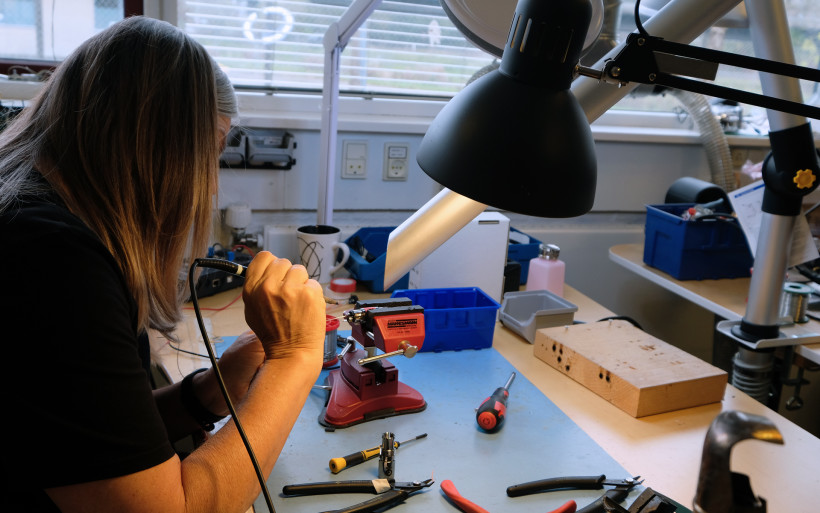 Helle Pedersen handled soldering iron far better than yours truly ever will
Helle Pedersen handled soldering iron far better than yours truly ever will
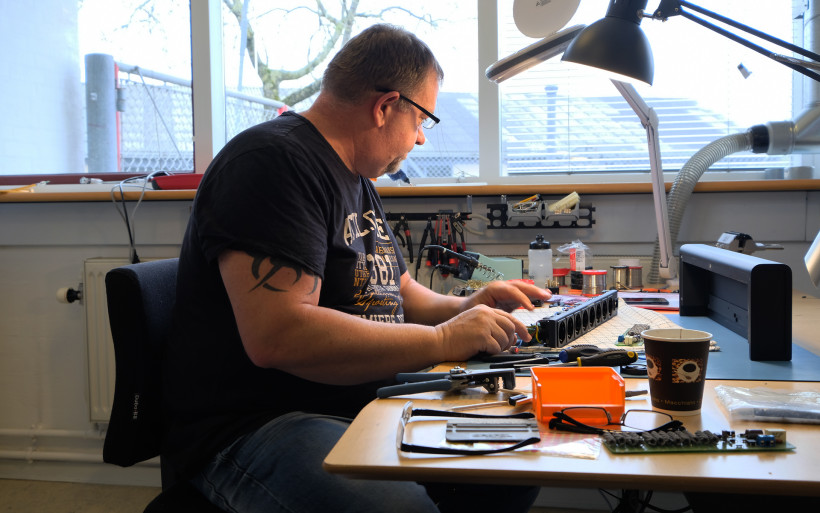 Henrik Kirk wrapping up one of Ansuz’ power distributors…
Henrik Kirk wrapping up one of Ansuz’ power distributors…
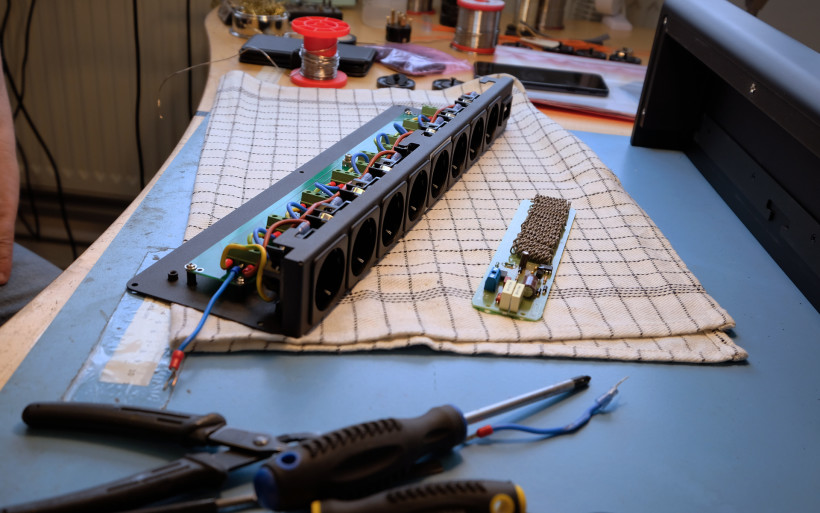 …and the distribution box itself with one Tesla coil module just next to it
…and the distribution box itself with one Tesla coil module just next to it
I still had the Nordost experience in my head, so here and now was the best time to ask Michael about what I heard the other day. The man didn’t say a word about this company’s products, but told me a thing or two about their own power cables. Ground legs of all Ansuz power cords are 10mm2 thick, whereas the remaining two runs wound tightly together yet coiled in opposite directions (Ansuz’ double-inverted helix coil aka DIHC) lead to reduced inductance. There’s also a passive noise suppression plot known as NSC. This coiled element connected to a conductor addresses AC power spikes by generating opposite ones, which results, yes, in silence. NSC modules stack, so higher Ansuz tiers have more of them inside. And lastly, mechanical grounding applies to power cables as well. Each is stiff, based on solid core conductors and coated with sensibly hard materials.
Next we moved a bit deeper within the same location, where I saw how Aavik’s hardware is put together. Bjarne Hansen was just finishing a batch of short blue cables fixed with mini-BNC plugs. Upon asking what these petite items were for, communication between key modules inside of Aavik’s products was the answer. Considering that even top shelf stuff usually incorporates just a piece of wire soldered on both ends, Danes clearly pushed further.
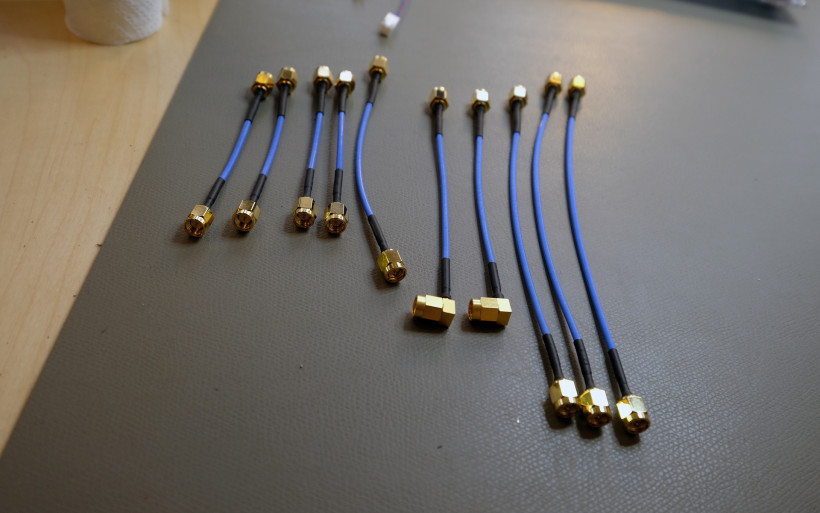 Connective veins in Aavik products
Connective veins in Aavik products
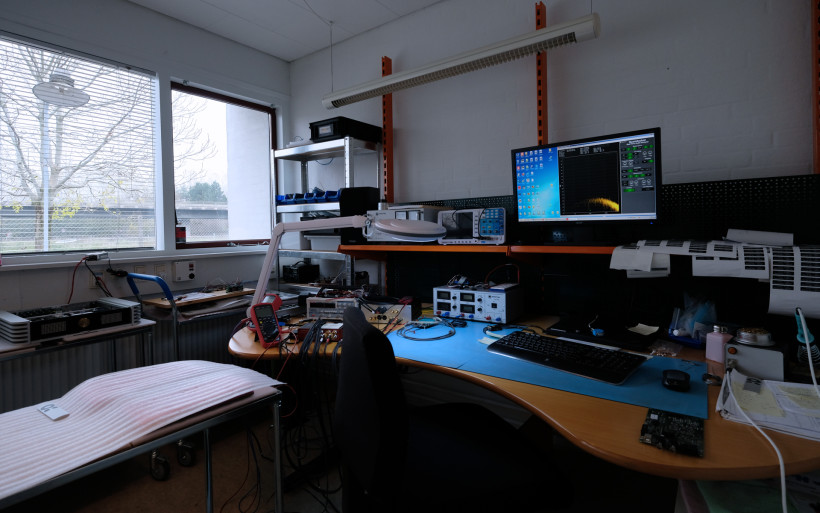 The room above is as geeky as it’s necessary
The room above is as geeky as it’s necessary
 One of Aavik’s 150 series machines in the ‘ready to be measured’ stage
One of Aavik’s 150 series machines in the ‘ready to be measured’ stage
We entered the self-explanatory small room loaded with measuring hardware. That was the place each product had to visit prior to going to the final QC and packaging area. Upon seeing a small wooden board with three modules fixed to it, Michael asked the company’s developer Mikkel to explain. I focused on a volume control unit with discrete operational amplifiers on its both sides. A resistor array inside of a fully analogue volume chip controlled by a shaft encoder was my guess. Partially I was right, it was a volume scheme with most likely a rotary UI to be added later on, but the key thing – the chip itself – was a miss. The yellow board housed an industry-grade R2R DAC. Mikkel explained that its resistor ladder is more precise in comparison to its equivalent inside of a volume silicon, hence does a better job. However, several parts inside this d/a circuit had to be bypassed and built from scratch, so that’s what the Danish crew did with discrete op-amps. Impressive.
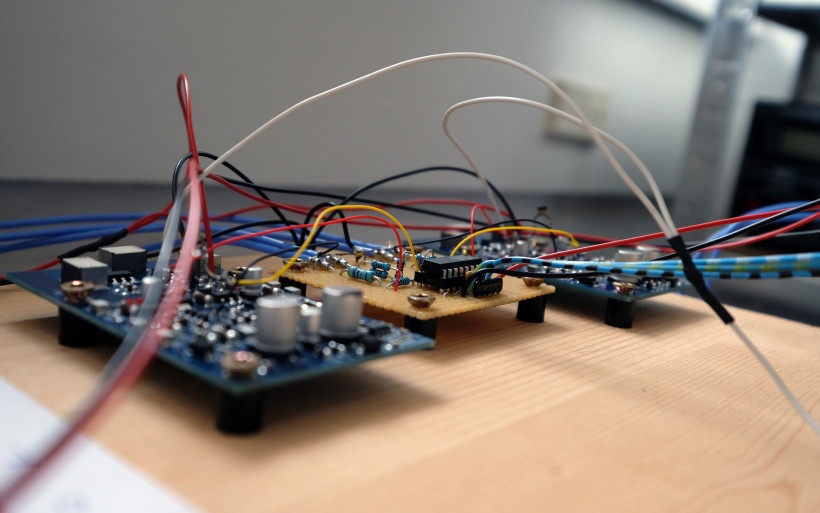 A DAC on the volume control duty
A DAC on the volume control duty
Shortly past leaving the large area, I saw Bjarne Hansen readying himself for turning hundreds of parts into Aavik’s TOTL integrated amp. He started from three top enclosure pieces and explained that many Aavik models are built like so. The U-300 assembly guide was a hefty book and the task itself with all tests later on was a several-days long job. Once this part of the HQ tour was done, I was granted a verbal VIP pass, which allowed me to move all over the Aalborg perimeter with no escort.
The lone wanderer
I moved upstairs once more to see what I missed. The company’s dining area, where all crew members have their lunch break together, was one such a place. Once in a while a cook visits them.
In order to grasp how big the facility truly was, I went to the main section downstairs and moved from there. It turned out that I saw more or less a half of the whole place shortly past my arrival. Michael and Frits led me to two listening rooms not yet finished, hence not open to public. Prior to going to these for now well-hidden locations, we had to move in a maze made of massive stacks of boxes. In any case, the Aalborg HQ is many things but small ain’t one of them.

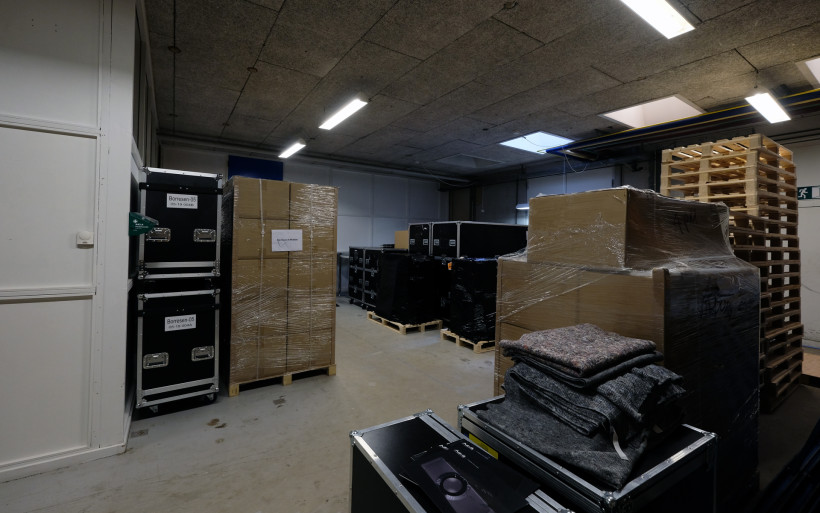 Lots of boxes ready to hit the road
Lots of boxes ready to hit the road
Then I headed towards the main storage hall connected with three smaller rooms. The first one was the place where all aluminium parts had their laser engravings done. This task not outsourced but handled in-house, allows the team to have i.e. cable plug enclosures labeled accordingly to constantly shifting needs and in rapid fashion. Outsourcing delays do not apply.
Next I took a quick peek inside of a storage unit with all available cable and power distribution stock. I imagined a metric ton of products amassed and awaiting their new homes, but in reality most leave the place shortly after they’re built. Several cables also had their internal braids exposed and formed into intricate patterns. A machine built by Michael’s father does all this.
The room where all products eventually have to land for the final QC was my next stop. The setup in there was connected to the in-house developed switch.
The large storage area just outside not only is Iben’s kingdom, but also the place from where all packages leave the facility. Before this happens, Iben removes all finger marks and dust from products, brands them with serial numbers, then puts inside boxes and in general keeps track on where they’re shipped to. The very much industrial view included numerous racks full of hardware and a ramp just outside
 It’s fair to say that Iben has generous space around her…
It’s fair to say that Iben has generous space around her…
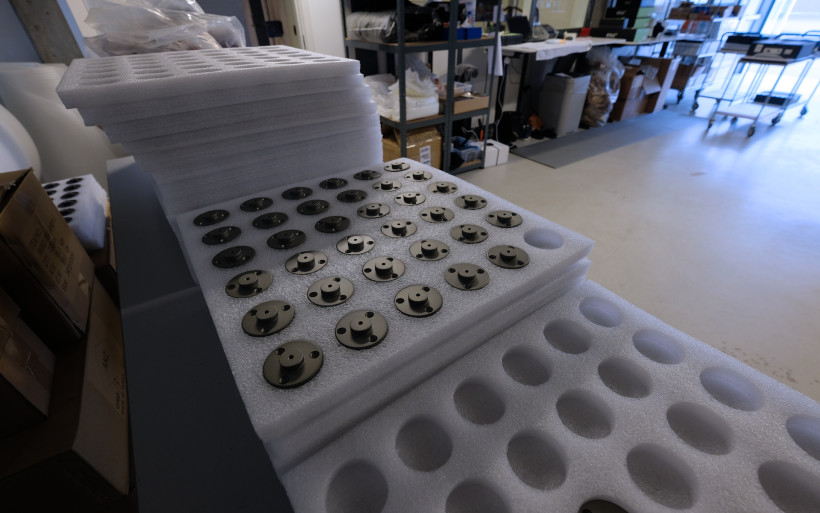 …but gladly shares it with kilograms of aluminium and titanium
…but gladly shares it with kilograms of aluminium and titanium
Shortly before my departure, Lars, Michael and Frits took me to the main listening room previously occupied by Børresen 05 floorstanders. The place now accommodated Michael’s latest creation – Z01 monitors – in the middle. This petite performer still in development covered the whole area with sound, yet without the sensation of being pushed too hard or in general not fit for such large spaces. The early Z01 version behaved itself very nicely all in all, which was quite the achievement considering its very small frame and far lower asking price in comparison to i.e. 01 monitors. It was time to head back home.
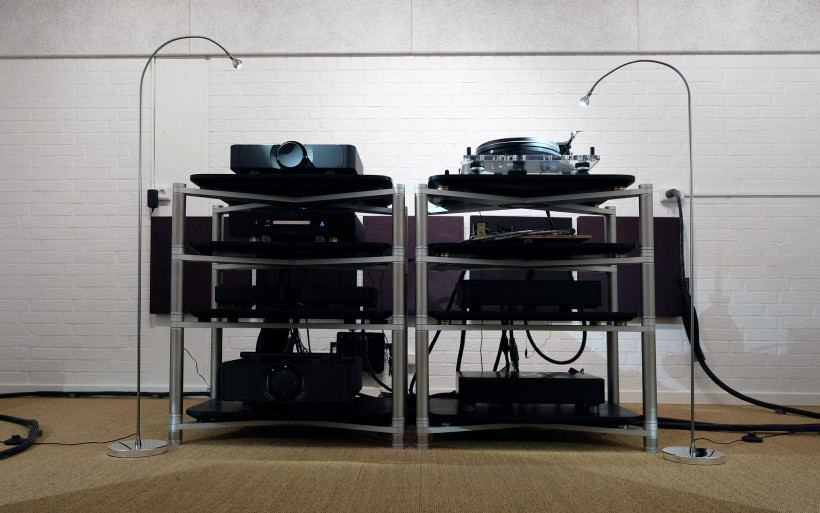 Michael’s latest monitors were purposely connected to Ansuz/Aavik’s heavy hitters
Michael’s latest monitors were purposely connected to Ansuz/Aavik’s heavy hitters
Summary
The Internet allows us to get at best somewhat familiar with many luxurious things, barely scratch their proverbial surface. It matters not whether the talk is about gourmet cuisine, Swiss watches, diamonds larger than life, hypercars or anything else, costly audio products included. Luxury needs to be experienced and learnt in order to be fully grasped. And having said this, I returned home from Denmark even more aware that that’s how it works indeed.
Lars picked me up from Nørresundby in his customized BMW M4 GTS, which at first glance seemed to be yet another nicely styled sporty German car. What I wasn’t quite aware of is that this ultra-light 540-horsepower beast dishes out 720 N⋅m of torque and does 0-60 in 3,8s. I’ve read about such rides, hence I knew something. But as a passenger previously not familiar with acceleration this rapid and plainly brutal, I could only sit tight and silently hold my breath once Lars barely tickled his daily drive’s gas pedal, let alone flooring it. That wasn’t yours truly versus a car clearly meant for the race track. That was the reality versus YouTube videos. Needless to say, top shelf audio such as today’s ain’t any different, the same rules apply.
The early sensation of the BMW that wanted to kill me eventually faded and made room for appreciation towards what this car was capable of, then followed by a heart-warming thought that perhaps one day I’ll drive something similar. But the point is that I had to ride the CEO’s M4 GTS to understand it and my experience with this report’s Aavik, Ansuz and Børresen was exactly the same. Over three days my view on these brands severely changed; from staggeringly expensive exoticism above all else, to thoroughly engineered and very effective high-performance items, clearly designed to do 0-60 times faster than their competition.
The Danish heavyweight technological background, unorthodox design approaches, uniform principles and decades in the business, all led to me deeply impressed with the result and obviously hungry for more. It remains to be seen whether at my place I’ll be able to replicate what Lars and Frits introduced me to at theirs, but it’s a challenge I’ll gladly accept. My sincere thanks to the hosts for hospitality and utmost memorable three days spent in their company. ‘Till next time!
Aavik Acoustics
Ansuz Acoustics
Børresen Acoustics


